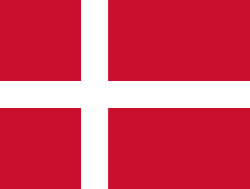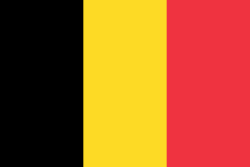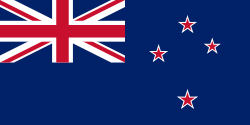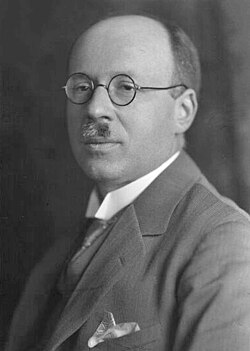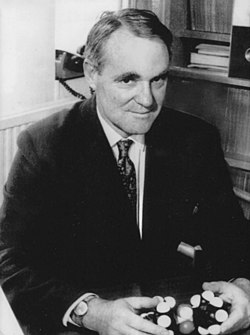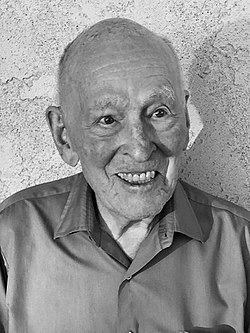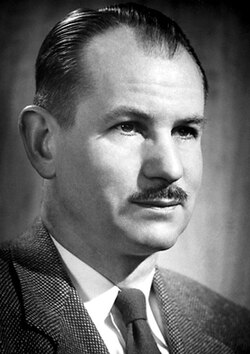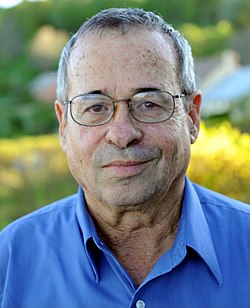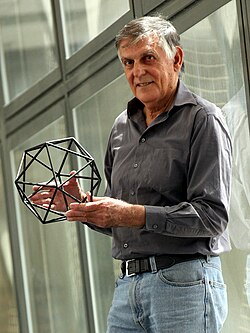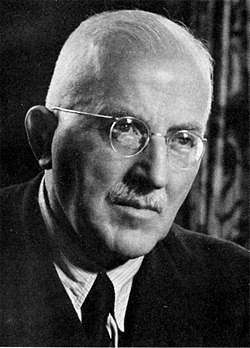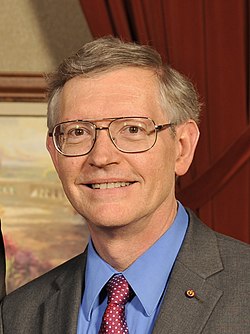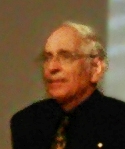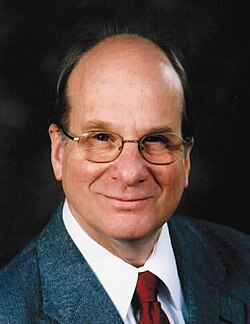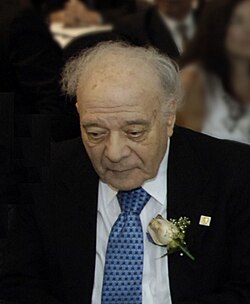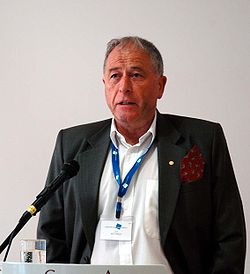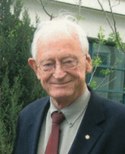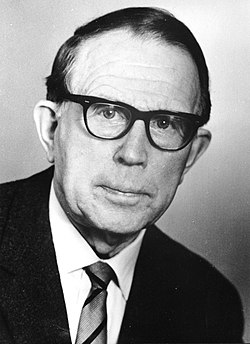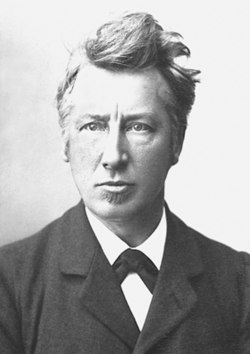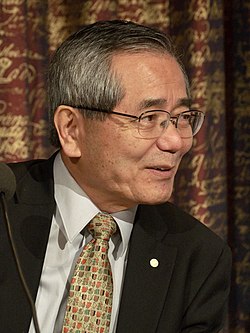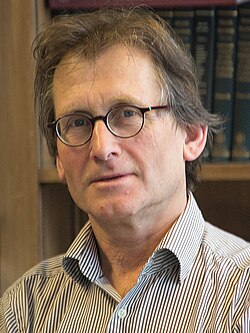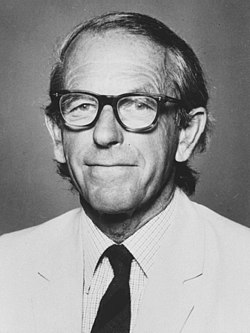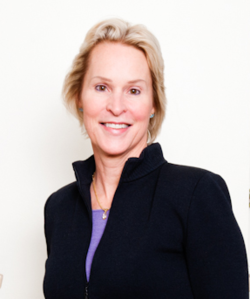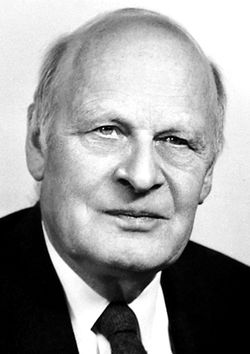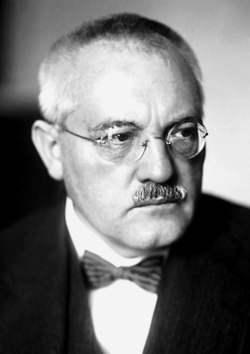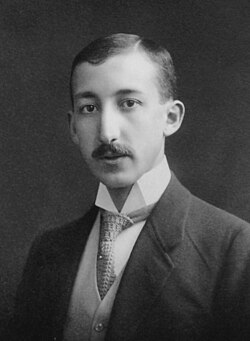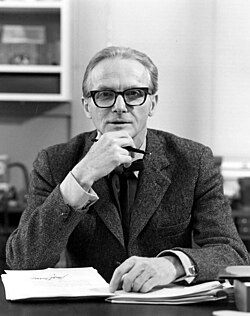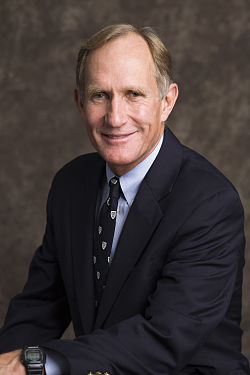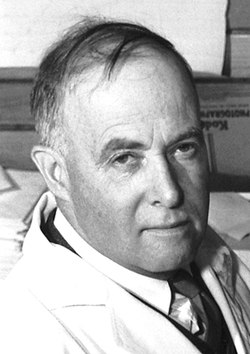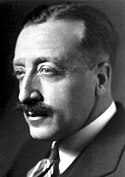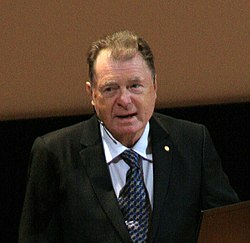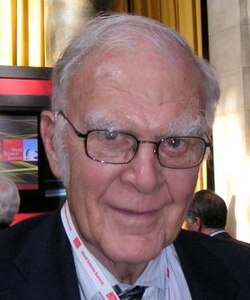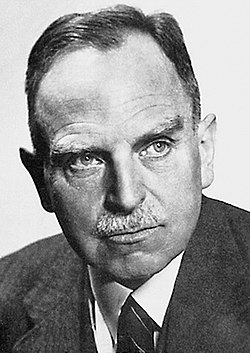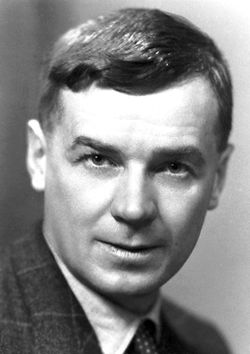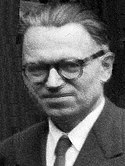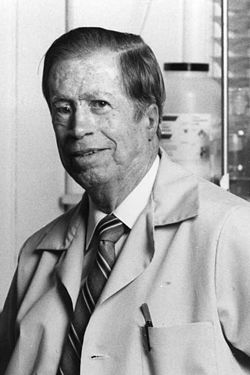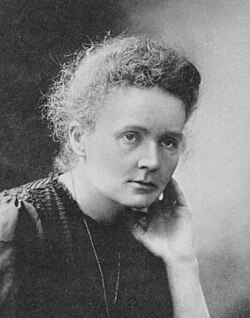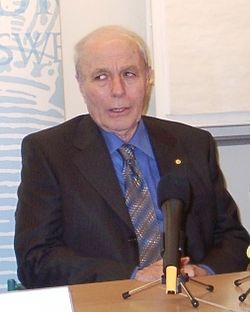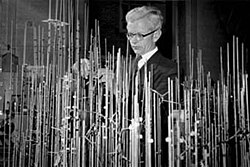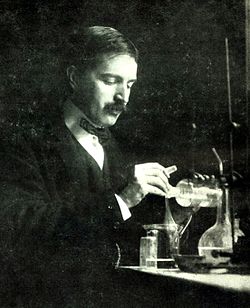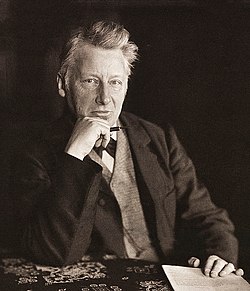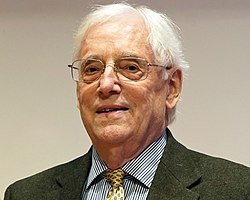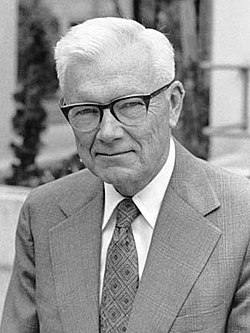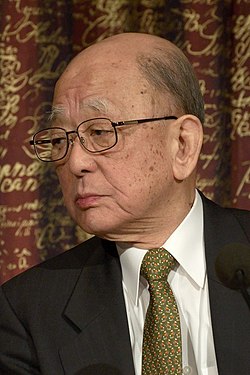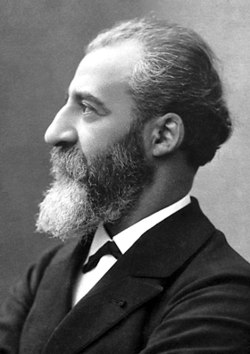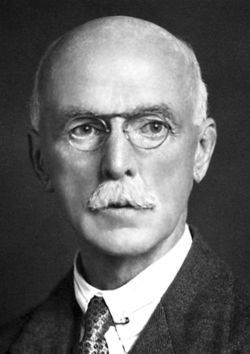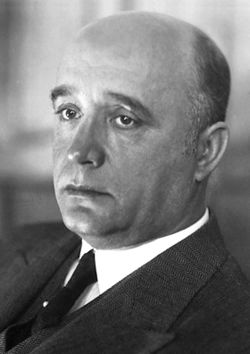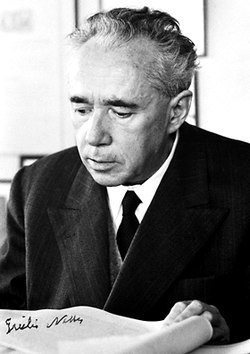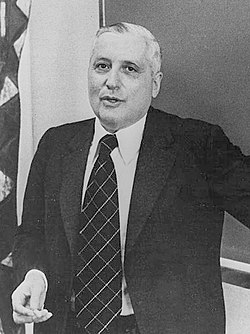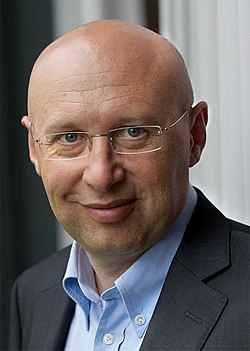Nobelpriset i kemi
| Nobelpriset i kemi | |
| Beskrivning | vetenskapspris |
|---|---|
| Utdelare | Kungliga Vetenskapsakademien |
| Plats | Stockholm |
| Land | |
| Första utdelning | 1901 |
| Återkommande | årligen |
| Tidpunkt | 10 december |
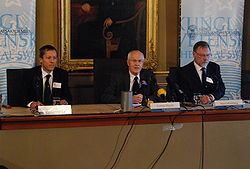


Nobelpriset i kemi delas ut årligen av Kungliga Vetenskapsakademien till naturvetare inom kemins olika områden. Det är ett av de fem nobelpris som etablerades genom Alfred Nobels testamente från 1895 och delas ut för enastående bidrag inom kemi, fysik, litteratur, fred och fysiologi eller medicin.[1] Alfred Nobel specificerade att ett av prisen skulle gå till den som under det gångna året ”har gjort den viktigaste kemiska upptäckt eller förbättring”.[2] Genom Nobels föreskrifter i testamentet administreras priset av Nobelstiftelsen och delas ut av Kungliga Vetenskapsakademien. Nominerings- och utredningsarbete sköts av akademiens Nobelkommitté för kemi som består av medlemmar som väljs av Kungliga Vetenskapsakademien.[3]
Det första Nobelpriset i kemi delades ut 1901 till Jacobus van ’t Hoff från Nederländerna. Varje pristagare får en medalj, ett diplom och en penningsumma som varierat genom åren.[4] År 1901 fick van ’t Hoff 150 782 svenska kronor vilket var att jämföra med 8 402 670 kronor i december 2017. År 2017 gick priset till Jacques Dubochet, Joachim Frank och Richard Henderson, som delade på 9 000 000 kronor.[5] Priset delas ut i Stockholm vid en årlig ceremoni den 10 december, på Nobels dödsdag.[6]
Bakgrund
Alfred Nobel skrev i sitt sista testamente att hans pengar skulle gå till att skapa en serie priser till de som gör ett viktigt arbete inom fysik, kemi, fred, fysiologi eller medicin och litteratur.[7][8] Även om Nobel skrev flera testamenten under sitt liv skrevs det sista litet över ett år innan han dog, och skrevs på vid den svensk-norska klubben i Paris den 27 november 1895.[9][10] Nobel testamenterade 94 procent av sina tillgångar, 31 miljoner kronor, för att etablera de fem prisen.[11] På grund av den skepticism som omgav testamentet godkändes det inte förrän den 26 april 1897 av det norska Stortinget.[12][13] Testamentets verkställare var Ragnar Sohlman och Rudolf Liljequist, som skapade Nobelstiftelsen för att ta hand om Nobels förmögenhet och att organisera priserna.
Medlemmarna av den norska Nobelkommittén som skulle dela ut fredspriset tillsattes kort efter att testamentet godkändes. De prisutgivande organisationerna blev Karolinska Institutet den 7 juni, Svenska Akademien den 9 juni, och Kungliga Vetenskapsakademien den 11 juni.[14][15] Nobelstiftelsen nådde sedan en överenskommelse för riktlinjer över hur Nobelpriset skall delas ut. År 1900 kungjordes stiftelsens nyskapade statut av kung Oscar II.[13][16][17] Enligt Nobels testamente skulle Kungliga Vetenskapsakademien dela ut priset i kemi.[11]
Priser och pristagare
Pristagaren får en guldmedalj, ett diplom och en summa pengar.[4] Penningsumman beror på Nobelstiftelsens inkomst under det gångna året.[5] Om priset ges till mer än en, delas de antingen lika mellan dem, eller för tre pristagare, kan den delas i en halva och två kvartar.[18]

Åtminstone 25 pristagare har fått Nobelpris för bidrag inom organisk kemi vilket är mer än något annat av kemins fält.[19] Två Nobelpristagare i kemi, tyskarna Richard Kuhn (1938) och Adolf Butenandt (1939), tilläts inte av sina regeringar att motta priset. De fick senare en medalj och ett diplom, men inte pengarna. Frederick Sanger och Karl Barry Sharpless är de enda som har tilldelats priset två gånger, 1958 och 1980, respektive 2001 och 2022. Två andra fick Nobelpris även i andra ämnen, Marie Curie i fysik 1903 och kemi 1911, och Linus Pauling i kemi 1954 och fred 1962. Linus Pauling är den ende som fått två odelade Nobelpris.[20] Totalt har åtta kvinnor tilldelats kemipriset, förutom Marie Curie gavs det åt Irène Joliot-Curie (1935), Dorothy Crowfoot Hodgkin (1964), Ada E. Yonath (2009), Frances Arnold (2018), Emmanuelle Charpentier (2020), Jennifer Doudna (2020) och Carolyn Bertozzi (2022).[20] År 2023 hade priset tilldelats 192 personer.[20] Åtta år sedan start har inga pris delats ut.
Lista över pristagare
| År | Pristagare[A] | Land[B] | Prismotivering[C] | |
|---|---|---|---|---|
| 1901 |  | Jacobus Henricus van 't Hoff | Nederländerna | "[för hans] upptäckt av kemisk dynamik och osmotiskt tryck i lösningar"[21] |
| 1902 | Hermann Emil Fischer | Tyskland | "[för] hans arbete med socker- och purinsyntes"[22] | |
| 1903 |  | Svante August Arrhenius | Sverige | "[för] hans elektrolytiska dissociationsteori"[23] |
| 1904 |  | Sir William Ramsay | Storbritannien | "[för hans] upptäckt av inerta gasformiga grundämnen i luft, och bestämning av deras plats i det periodiska systemet"[24] |
| 1905 |  | Johann Friedrich Wilhelm Adolf von Baeyer | Tyskland | "[för] förbättringen av organisk kemi och den kemiska industrin, genom hans arbete med organiska färger och hydroaromatiska föreningar"[25] |
| 1906 |  | Henri Moissan | Frankrike | "[för hans] undersökning och isolering av ämnet fluor, och för [den] elektriska ugn som är uppkallad efter honom"[26] |
| 1907 |  | Eduard Buchner | Tyskland | "för hans biokemiska efterforskningar och upptäckten av cellfri jäsning"[27] |
| 1908 |  | Ernest Rutherford | Storbritannien Nya Zeeland | "för hans undersökningar av grundämnenas förfall, och radioaktiva ämnens kemi"[28] |
| 1909 |  | Wilhelm Ostwald | Tyskland | "[för] hans arbete med katalys och för hans undersökningar inom de fundamentala principerna som styr kemisk jämvikt och reaktionshastigheter"[29] |
| 1910 |  | Otto Wallach | Tyskland | "[för] hans tjänster för den organiska kemin och den kemiska industrin genom hans banbrytande arbete inom alicykliska föreningar"[30] |
| 1911 |  | Marie Curie, född Maria Sklodowska | Polen / Frankrike | "[för] upptäckandet av grundämnena radium och polonium, genom isolering av radium och studerandet av detta märkvärdiga elements natur och föreningar"[31] |
| 1912 |  | Victor Grignard | Frankrike | "för upptäckandet av [...] Grignardreaktionen"[32] |
 | Paul Sabatier | Frankrike | "för hans metod att hydrogenera organiska föreningar i närvaro av finfördelad metall"[32] | |
| 1913 |  | Alfred Werner | Schweiz | "[för] hans arbete med bindningar mellan atomer i molekyler [...] speciellt inom oorganisk kemi"[33] |
| 1914 |  | Theodore William Richards | USA | "[för] hans exakta bestämningar av atomvikter hos ett stort antal kemiska grundämnen"[34] |
| 1915 |  | Richard Martin Willstätter | Tyskland | "för hans efterforskningar på växtpigment, i synnerhet klorofyll"[35] |
| 1916 | Ej utdelat[D] | |||
| 1917 | Ej utdelat | |||
| 1918 | 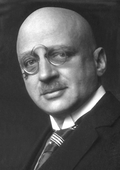 | Fritz Haber | Tyskland | "för synteser av ammoniak från dess grundämnen"[36] |
| 1919 | Ej utdelat | |||
| 1920 |  | Walther Hermann Nernst | Tyskland | "[för] hans arbete i termokemi"[37] |
| 1921 |  | Frederick Soddy | Storbritannien | "för hans bidrag till vår kunskap om radioaktiva substansers kemi, och hans undersökningar i isotopers ursprung och natur"[38] |
| 1922 |  | Francis William Aston | Storbritannien | "för hans upptäckt, medelst hans masspektrograf, av stabil isotoper, i ett stort antal icke radioaktiva grundämnen, och för hans formulering av heltalsregeln"[39] |
| 1923 |  | Fritz Pregl | Österrike | "för hans uppfinning av mikroanalysmetoden av organiska substanser"[40] |
| 1924 | Ej utdelat | |||
| 1925 |  | Richard Zsigmondy | Tyskland / Ungern | "för hans demonstration av kolloida lösningars heterogena natur och för de metoder han använde"[41] |
| 1926 |  | The (Theodor) Svedberg | Sverige | "för sina arbeten om dispersa system"[42] |
| 1927 |  | Heinrich Otto Wieland | Tyskland | "för hans undersökningar i gallsyror och liknande substansers uppbyggnad"[43] |
| 1928 |  | Adolf Windaus | Tyskland | "[för] hans efterforskningar i sterolers uppbyggnad och deras koppling till vitaminer"[44] |
| 1929 |  | Arthur Harden | Storbritannien | "för deras undersökningar av jäsning av socker och jäsningsenzymer"[45] |
 | Hans von Euler-Chelpin | Tyskland / Sverige | ||
| 1930 |  | Hans Fischer | Tyskland | "för hans forskning om strukturen hos hemin och klorofyll, samt i synnerhet för hans syntes av hemin"[46] |
| 1931 |  | Carl Bosch | Tyskland | "[för] deras bidrag till uppfinnandet och utvecklandet av kemiska högtrycksmetoder" (Bergiusprocessen och Haber-Boschprocessen)[47] |
 | Friedrich Bergius | Tyskland | ||
| 1932 |  | Irving Langmuir | USA | "för hans upptäckter och undersökningar i ytkemin"[48] |
| 1933 | Ej utdelat[E] | |||
| 1934 |  | Harold Urey | USA | "för hans upptäckt av tungt väte"[49] |
| 1935 |  | Frédéric Joliot | Frankrike | "[för] deras syntes av nya radioaktiva grundämnen"[50] |
 | Irène Joliot-Curie | Frankrike | ||
| 1936 |  | Petrus (Peter) Josephus Wilhelmus Debye | Nederländerna | "[för hans arbete om] molekylär struktur genom hans undersökningar om dipolmoment och röntgen- och elektrondiffraktion i gaser"[51] |
| 1937 |  | Walter Norman Haworth | Storbritannien | "för hans undersökningar om kolhydrater och vitamin C"[52] |
 | Paul Karrer | Schweiz | "för hans undersökningar om karotenoider, flaviner och vitamin A och B2"[52] | |
| 1938 |  | Richard Kuhn | Tyskland | "för hans arbete om karotenoider och vitaminer"[53] |
| 1939 |  | Adolf Friedrich Johann Butenandt | Tyskland | "för hans arbete om könshormoner"[54] |
 | Leopold Ruzicka | Schweiz | "för hans studier av polymetylener och högre terpener"[54] | |
| 1940 | Ej utdelat | |||
| 1941 | Ej utdelat | |||
| 1942 | Ej utdelat | |||
| 1943 |  | George de Hevesy | Ungern | "för hans arbete om användandet av isotoper som spårare i studerandet av kemiska processer"[55] |
| 1944 |  | Otto Hahn | Tyskland | "för hans upptäckt av fission av tunga atomkärnor"[56] |
| 1945 |  | Artturi Ilmari Virtanen | Finland | "för hans forskning och uppfinningar inom agrikulturell och näringsmässig kemi, i synnerhet för hans foderkonserveringsmetod"[57] |
| 1946 |  | James Batcheller Sumner | USA | "för hans upptäckt att enzymer kan kristalliseras"[58] |
 | John Howard Northrop | USA | "för deras tillredning av enzymer och virusproteiner i en ren form[58] | |
 | Wendell Stanley | USA | ||
| 1947 |  | Sir Robert Robinson | Storbritannien | "för hans undersökningar om växtprodukter av biologisk betydelse, i synnerhet alkaloiderna"[59] |
| 1948 |  | Arne Wilhelm Kaurin Tiselius | Sverige | "för hans forskning om elektrofores och adsorptionsanalys, i synnerhet för hans upptäckter rörande serumproteiners komplexa natur"[60] |
| 1949 |  | William Francis Giauque | USA | "för hans bidrag i fältet kemisk termodynamik, framförallt rörande substansers beteende vid extremt låga temperaturer"[61] |
| 1950 |  | Otto Paul Hermann Diels | Västtyskland | "för deras upptäckt och utvecklande av diensyntesen"[62] |
 | Kurt Alder | Västtyskland | ||
| 1951 | Edwin Mattison McMillan | USA | "för deras upptäckter inom transuranernas kemi"[63] | |
| Glenn Theodore Seaborg | USA | |||
| 1952 |  | Archer John Porter Martin | Storbritannien | "för deras uppfinning av fördelningskromatografi"[64] |
 | Richard Laurence Millington Synge | Storbritannien | ||
| 1953 |  | Hermann Staudinger | Västtyskland | "för hans upptäckter inom fältet makromolekylär kemi"[65] |
| 1954 |  | Linus Carl Pauling | USA | "för hans forskning inom kemiska bindningars natur och kartläggning av komplexa föreningars struktur"[66] |
| 1955 |  | Vincent du Vigneaud | USA | "för hans arbete med biokemiskt viktiga svavelföreningar, i synnerhet för den första syntesen av ett polypeptidhormon"[67] |
| 1956 |  | Sir Cyril Norman Hinshelwood | Storbritannien | "för deras forskningar inom mekanismen av kemiska reaktioner"[68] |
 | Nikolay Nikolaevich Semenov | Sovjetunionen | ||
| 1957 |  | Lord (Alexander R.) Todd | Storbritannien | "för hans arbete med nukleotider och nukleotida kofaktorer"[69] |
| 1958 |  | Frederick Sanger | Storbritannien | "för hans arbete med proteiners strukturer, speciellt insulinets"[70] |
| 1959 |  | Jaroslav Heyrovský | Tjeckoslovakien | "för hans upptäckt och utvecklande av de polarografiska analysmetoderna"[71] |
| 1960 |  | Willard Frank Libby | USA | "för hans metod att använda kol-14 för åldersbestämning inom arkeologi, geologi, geofysik och andra vetenskapliga grenar"[72] |
| 1961 | 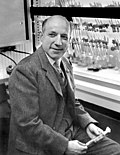 | Melvin Calvin | USA | "för hans efterforskningar om koldioxidassimilering i plantor"[73] |
| 1962 |  | Max Ferdinand Perutz | Storbritannien | "för deras studier av globulära proteiners strukturer"[74] |
 | John Cowdery Kendrew | Storbritannien | ||
| 1963 |  | Karl Ziegler | Västtyskland | "för deras upptäckter i det kemiska och teknologiska fältet av höga polymer"[75] |
 | Giulio Natta | Italien | ||
| 1964 |  | Dorothy Crowfoot Hodgkin | Storbritannien | "för hennes determinationer med röntgentekniker av viktiga biokemiska substansers strukturer"[76] |
| 1965 |  | Robert Burns Woodward | USA | "för hans enastående åstadkommanden inom organiska synteser"[77] |
| 1966 | 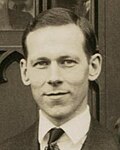 | Robert S. Mulliken | USA | "för hans fundamentala arbete rörande kemiska bindningar och molekylers elektroniska strukturer genom molekylorbitalmetoden"[78] |
| 1967 |  | Manfred Eigen | Västtyskland | "för deras studier av extremt snabba kemiska reaktioner, åstadkommet genom att störa jämvikten med hjälp av väldigt korta energipulser"[79] |
 | Ronald George Wreyford Norrish | Storbritannien | ||
 | George Porter | Storbritannien | ||
| 1968 |  | Lars Onsager | USA | "för upptäckandet av reciproka relationer som är uppkallade efter honom, vilka är fundamentala för irreversibla processers termodynamik"[80] |
| 1969 |  | Derek H. R. Barton | Storbritannien | "för deras bidrag till utvecklandet av konformation och dess applikation i kemin"[81] |
 | Odd Hassel | Norge | ||
| 1970 |  | Luis F. Leloir | Argentina | "för hans upptäckt av sockernukleotider och deras roll i biosyntesen av kolhydrater"[82] |
| 1971 |  | Gerhard Herzberg | Kanada | "för hans bidrag till kunskapen om elektronisk struktur och geometri av molekyler, speciellt fria radikaler"[83] |
| 1972 |  | Christian B. Anfinsen | USA | "för hans arbete med ribonukleas, speciellt rörande kopplingen mellan aminosyrasekvensen och den biologiskt aktiva konformationen"[84] |
 | Stanford Moore | USA | "för deras bidrag till förståelsen av kopplingen mellan kemisk struktur och katalytisk aktivitet hos det aktiva sätet i ribonukleasmolekylen"[84] | |
 | William H. Stein | USA | ||
| 1973 |  | Ernst Otto Fischer | Västtyskland | "för deras banbrytande arbete, utfört enskilt, inom den metallorganiska kemin, så kallade sandwichföreningar"[85] |
 | Geoffrey Wilkinson | Storbritannien | ||
| 1974 |  | Paul J. Flory | USA | "för hans fundamentala arbete, både teoretiskt och experimentellt, i makromolekylers fysikaliska kemi"[86] |
| 1975 |  | John Warcup Cornforth | Australien Storbritannien | "för hans arbete med enzymkatalyserande reaktioners stereokemi"[87] |
 | Vladimir Prelog | Schweiz | "för hans forskning om organiska molekylers och reaktioners stereokemi"[87] | |
| 1976 |  | William N. Lipscomb | USA | "för hans studier av boraners illuminerande problem av kemisk bindning"[88] |
| 1977 |  | Ilya Prigogine | Belgien | "för hans bidrag till icke-jämviktstermodynamik, i synnerhet för teorin om dissipativa strukturer"[89] |
| 1978 |  | Peter D. Mitchell | Storbritannien | "för hans bidrag till förståelsen av biologisk energiöverföring genom formuleringen av den kemiosmotika teorin"[90] |
| 1979 |  | Herbert C. Brown | USA | "för deras utveckling av användandet av bor- och fosforinnehållande föreningar, respektivt, till viktiga reagens i organisk syntes"[91] |
 | Georg Wittig | Västtyskland | ||
| 1980 |  | Paul Berg | USA | "för hans fundamentala studier av nukleinsyrors biokemi, med särskilt hänseende till rekombinant DNA"[92] |
 | Walter Gilbert | USA | "för deras bidrag rörande bestämning av bassekvenser i nukleinsyror"[92] | |
 | Frederick Sanger | Storbritannien | ||
| 1981 |  | Kenichi Fukui | Japan | "för deras teorier, utvecklade enskilt, rörande kemiska reaktioners förlopp"[93] |
 | Roald Hoffmann | USA | ||
| 1982 |  | Aaron Klug | Storbritannien | "för hans utveckling av kristallografisk elektronmikroskopi och hans strukturella bestämning av biologiskt viktiga nukleinsyraproteinkomplex"[94] |
| 1983 |  | Henry Taube | USA | "för hans arbete med elektronöverföringsreaktioner, speciellt i metallkomplex"[95] |
| 1984 |  | Robert Bruce Merrifield | USA | "för hans utveckling av metodologin för kemiska synteser på fast matris"[96] |
| 1985 |  | Herbert A. Hauptman | USA | "för deras enastående åstadkommanden med att utveckla direka metoder för att bestämma kristallstrukturer"[97] |
 | Jerome Karle | USA | ||
| 1986 |  | Dudley R. Herschbach | USA | "för deras bidrag rörande de kemiska processernas dynamik"[98] |
 | Yuan T. Lee | USA | ||
 | John C. Polanyi | Kanada / Ungern | ||
| 1987 |  | Donald J. Cram | USA | "för deras utveckling och användande av molekyler med strukturspecifika interaktioner av hög selektivitet"[99] |
 | Jean-Marie Lehn | Frankrike | ||
 | Charles J. Pedersen | USA | ||
| 1988 |  | Johann Deisenhofer | Västtyskland | "för deras bestämning av den tredimensionella strukturen hos ett fotosyntetiskt reaktionscentrum"[100] |
 | Robert Huber | Västtyskland | ||
 | Hartmut Michel | Västtyskland | ||
| 1989 |  | Sidney Altman | Kanada USA | "för deras upptäckt av RNA:s katalytiska egenskaper"[101] |
 | Thomas R. Cech | USA | ||
| 1990 |  | Elias James Corey | USA | "för hans utveckling av organiska syntesers teori och metodologi"[102] |
| 1991 | 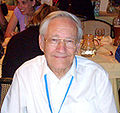 | Richard R. Ernst | Schweiz | "för hans bidrag till utvecklingen av högupplöst kärnmagnetisk resonansspektroskopi (NMR)"[103] |
| 1992 |  | Rudolph A. Marcus | USA | "för hans bidrag till teorin om elektronöverföringsreaktioner i kemiska system"[104] |
| 1993 |  | Kary B. Mullis | USA | "för bidrag till utvecklingen av metoder inom den DNA-baserade kemin [...] för hans uppfinning av polymeraskedjereaktionsmetoden (PCR)"[105] |
 | Michael Smith | Kanada | "för bidrag till utvecklingen av metoder inom den DNA-baserade kemin [...] för hans fundamentala bidrag till etablerandet av oligonukleotidbaserade sätesdirigerad mutagenes och dess utveckling för proteinstudier"[105] | |
| 1994 |  | George A. Olah | USA / Ungern | "för hans bidrag till karbokatjonskemin"[106] |
| 1995 |  | Paul J. Crutzen | Nederländerna | "för deras arbete inom den atmosfäriska kemin, speciellt rörande formationen och upplösningen av ozon"[107] |
 | Mario J. Molina | USA | ||
 | F. Sherwood Rowland | USA | ||
| 1996 |  | Robert F. Curl Jr. | USA | "för deras upptäckt av fullerener"[108] |
 | Sir Harold W. Kroto | Storbritannien | ||
 | Richard E. Smalley | USA | ||
| 1997 |  | Paul D. Boyer | USA | "för deras klargörande av den enzymatiska mekanismen bakomliggande syntesen av adenosintrifosfat (ATP)"[109] |
 | John E. Walker | Storbritannien | ||
 | Jens C. Skou | Danmark | "för det först upptäckta jontransporterande enzymet, Na+, K+ -ATPas"[109] | |
| 1998 |  | Walter Kohn | USA | "för hans utvecklande av täthetsfunktionalteorin"[110] |
 | John A. Pople | Storbritannien | "för hans utvecklande av beräkningsmetoder inom kvantkemin"[110] | |
| 1999 |  | Ahmed H. Zewail | Egypten USA | "för hans studier av övergångstillstånden i kemiska reaktioner genom att använda femtosekundspektroskopi"[111] |
| 2000 |  | Alan J. Heeger | USA | "för deras upptäckt och utvecklande av ledande polymerer"[112] |
 | Alan G MacDiarmid | USA Nya Zeeland | ||
 | Hideki Shirakawa | Japan | ||
| 2001 |  | William S. Knowles | USA | "för deras arbete med kiralt katalyserande hydrogeneringsreaktioner"[113] |
 | Ryoji Noyori | Japan | ||
 | K. Barry Sharpless | USA | "för hans arbete med kiralt katalyserande oxidationsreaktioner"[113] | |
| 2002 |  | John B. Fenn | USA | "för att ha utvecklat metoder för identifiering och strukturanalyser av biologiska makromolekyler [...] för utvecklingen av mjuka desorptonsjonisationsmetoder för masspektrometriska analyser av biologiska makromolekyler"[114] |
 | Koichi Tanaka | Japan | ||
 | Kurt Wüthrich | Schweiz | "för utvecklandet av metoder för identifiering och strukturanalyser av biologiska makromolekyler [...] för hans utveckling av kärnmagnetisk resonansspektroskopi för att bestämma den tredimensionella strukturen hos biologiska makromolekyler i lösning"[114] | |
| 2003 |  | Peter Agre | USA | "för upptäckter rörande kanaler i cellmembran [...] för upptäckten av vattenkanaler"[115] |
 | Roderick MacKinnon | USA | "för upptäckter rörande kanaler i cellmembran [...] för strukturella och mekaniska studier av jonkanaler"[115] | |
| 2004 |  | Aaron Ciechanover | Israel | "för upptäckten av ubiquitinmedierad proteinnedbrytning"[116] |
 | Avram Hershko | Israel | ||
 | Irwin Rose | USA | ||
| 2005 |  | Yves Chauvin | Frankrike | "för utvecklandet av metatesmetoden inom organisk syntes"[117] |
 | Robert H. Grubbs | USA | ||
 | Richard R. Schrock | USA | ||
| 2006 |  | Roger D. Kornberg | USA | "för hans studier av den molekylära grunden för eukaryot transkription"[118] |
| 2007 |  | Gerhard Ertl | Tyskland | "för hans studier av kemiska processer på fasta ytor"[119] |
| 2008 |  | Osamu Shimomura | USA[120] | "för upptäckten och utvecklingen av grönt fluorescerande protein (GFP)"[121] |
 | Martin Chalfie | USA | ||
 | Roger Y. Tsien | USA | ||
| 2009 |  | Venkatraman Ramakrishnan | Storbritannien | "för studier av ribosomens struktur och funktion"[122] |
 | Thomas A. Steitz | USA | ||
 | Ada E. Yonath | Israel | ||
| 2010 |  | Richard F. Heck | USA | "för palladiumkatalyserade korskopplingar i organisk syntes"[123] |
 | Ei-ichi Negishi | Japan | ||
 | Akira Suzuki | Japan | ||
| 2011 |  | Dan Shechtman | Israel | "för upptäckten av kvasikristaller"[124] |
| 2012 |  | Brian Kobilka | USA | "för studier av G-proteinkopplade receptorer"[125] |
 | Robert Lefkowitz | USA | ||
| 2013 | Martin Karplus | Österrike/USA | "för utvecklandet av flerskalemodeller för komplexa kemiska system"[126] | |
 | Michael Levitt | Israel/Storbritannien/USA | ||
 | Arieh Warshel | Israel/USA | ||
| 2014 |  | William E. Moerner | USA | "för utveckling av superupplöst fluorescensmikroskopi"[127] |
 | Eric Betzig | |||
 | Stefan Hell | Tyskland | ||
| 2015 |  | Tomas Lindahl | Sverige | "för mekanistiska studier av DNA-reparation"[128] |
 | Paul Modrich | USA | ||
 | Aziz Sancar | Turkiet/USA | ||
| 2016 | Jean-Pierre Sauvage | Frankrike | "för design och syntes av molekylära maskiner"[129] | |
 | Fraser Stoddart | USA | ||
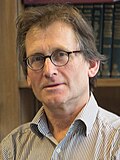 | Ben Feringa | Nederländerna | ||
| 2017 |  | Jacques Dubochet | Schweiz | "för utveckling av kryoelektronmikroskopi för högupplösande strukturbestämning av biomolekyler i lösning"[130] |
 | Joachim Frank | USA | ||
 | Richard Henderson | Storbritannien | ||
| 2018 |  | Frances Arnold | USA | "för den riktade evolutionen av enzymer"[131] |
 | George P. Smith | USA | "för fagdisplay av peptider och antikroppar"[132] | |
 | Gregory P. Winter | Storbritannien | ||
| 2019 |  | John B. Goodenough | USA | "för utveckling av litiumjonbatterier"[133] |
 | M. Stanley Whittingham | USA | ||
 | Akira Yoshino | Japan | ||
| 2020 |  | Emmanuelle Charpentier | Frankrike | "för utveckling av en metod för genomeditering"[134] |
 | Jennifer Doudna | USA | ||
| 2021 |  | Benjamin List | Tyskland | "för utveckling av asymmetrisk organokatalys"[135] |
 | David W.C. MacMillan | Storbritannien | ||
| 2022 |  | Carolyn Bertozzi | USA | "för utveckling av klickkemi och bioortogonal kemi"[136] |
 | Morten Meldal | Danmark | ||
 | Karl Barry Sharpless | USA | ||
| 2023 |  | Louis Brus | USA | "för upptäckt och syntes av kvantprickar"[137] |
 | Moungi Bawendi | USA | ||
 | Aleksej Ekimov | Ryssland/USA | ||
| 2024 |  | David Baker | USA | "för datorbaserad proteindesign"[138] |
 | Demis Hassabis | Storbritannien | ”för proteinstrukturprediktion” | |
 | John M. Jumper | USA | ||
Antal priser efter land
Om två personer av två olika nationaliteter delar på ett pris får båda länderna en halv "poäng".
| Nation | Antal priser |
|---|---|
| 63,5 | |
| 29 | |
| 26 | |
| 8 | |
| 6 | |
| 6 | |
| 4 | |
| 4 | |
| 3,5 | |
| 3 | |
| 2 | |
| 1 | |
| 1 | |
| 1 | |
| 1 | |
| 1 | |
| 1 | |
| 1 | |
| 1 | |
| 1 | |
| 1 | |
| 1 | |
| 0,5 | |
| 0,5 | |
| 0,5 |
Kommentarer
- A Namnens form och stavning är enligt nobelprize.org, Nobelstiftelsens officiella webbplats. Alternativa stavningar och namn, där de finns, finns i artiklarna som länkas från namnkolumnen. Där en bild finns tillgänglig finns en nobelpristagare avbildad. För Nobelstiftelsens officiella bilder, se varje nobelpristagares sida på nobelprize.org.
- B Informationen i landskolumnen är enligt nobelprize.org, Nobelstiftelsens officiella webbplats. Denna information måste inte nödvändigtvis reflektera mottagarens födelseplats eller medborgarskap.
- C Källorna för varje pris citeras från nobelprize.org, Nobelstiftelsens officiella webbplats. Länkarna i den här kolumnen går till artiklar, eller sektioner av artiklar, om historien och områden inom kemin inom vilka prisen presenteras. Länkarna är enbart menade som en guide och förklaring. För en full redogörelse över varje nobelpristagares arbete, se biografiartiklarna som det länkas till från samma kolumn.
- D Prissumman fonderades i sin helhet till kemiprisfonden.
- E Prissumman fonderades med 1/3 till huvudfonden och 2/3 till kemiprisfonden.
Se även
- Nobels fredspris
- Nobelpriset i fysik
- Nobelpriset i fysiologi eller medicin
- Nobelpriset i litteratur
- Lista över Nobelpristagare
Referenser
- Den här artikeln är helt eller delvis baserad på material från engelskspråkiga Wikipedia, tidigare version.
- Den här artikeln är helt eller delvis baserad på material från engelskspråkiga Wikipedia, tidigare version.
- Avsnittet "Antal priser efter land" är helt baserat på tyskspråkiga Wikipedia
Noter
- ^ ”Alfred Nobel – The Man Behind the Nobel Prize”. Nobelprize.org. https://www.nobelprize.org/alfred-nobel/. Läst 21 oktober 2018.
- ^ ”Alfred Nobels testamente”. Nobelprize.org. https://www.nobelprize.org/alfred-nobel/alfred-nobels-testamente/. Läst 21 oktober 2018.
- ^ ”Nobelprisen - Nominering och utdelning - Kungl. Vetenskapsakademien”. www.kva.se. Arkiverad från originalet den 31 oktober 2020. https://web.archive.org/web/20201031213559/https://www.kva.se/sv/priser/nobelprisen/nominering-och-utdelning. Läst 4 juli 2017.
- ^ [a b] ”Nobel Prize facts”. Nobelprize.org. Nobelstiftelsen. https://www.nobelprize.org/prizes/facts/nobel-prize-facts/. Läst 21 oktober 2018.
- ^ [a b] ”The Nobel Prize Amounts”. Nobelprize.org. Nobelstiftelsen. https://www.nobelprize.org/prizes/about/the-nobel-prize-amounts/. Läst 21 oktober 2018.
- ^ ”The Nobel Prize Award Ceremonies”. Nobelprize.org. https://www.nobelprize.org/nobel-prize-award-ceremonies/. Läst 21 oktober 2018.
- ^ ”History – Historic Figures: Alfred Nobel (1833–1896)”. BBC. http://www.bbc.co.uk/history/historic_figures/nobel_alfred.shtml. Läst 15 januari 2010.
- ^ ”Guide to Nobel Prize”. Britannica.com. http://www.britannica.com/nobelprize/article-9056008. Läst 15 januari 2010.
- ^ Sohlman, Ragnar (1983) (på engelska). The Legacy of Alfred Nobel: The Story Behind the Nobel Prizes. London: Bodley Head. sid. 7. Libris 4859628. ISBN 0-370-30990-1
- ^ von Euler, Ulf (6 juni 1981). ”The Nobel Foundation and its Role for Modern Day Science” (PDF). Die Naturwissenschaften (Springer-Verlag). Arkiverad från originalet den 14 juli 2011. https://web.archive.org/web/20110714080803/http://resources.metapress.com/pdf-preview.axd?code=xu7j67w616m06488&size=largest. Läst 21 januari 2010.
- ^ [a b] ”Alfred Nobels testamente”. Nobelprize.org. Nobelstiftelsen. https://www.nobelprize.org/alfred-nobel/alfred-nobels-testamente/. Läst 21 oktober 2018.
- ^ ”The Nobel Foundation – History”. Nobelprize.org. Arkiverad från originalet den 26 oktober 2007. https://web.archive.org/web/20071026032605/http://nobelprize.org/nobelfoundation/history/lemmel/index.html. Läst 15 januari 2010.
- ^ [a b] Wallin Levinovitz Agneta, Ringertz Nils, red (2001) (på engelska). The Nobel Prize: The First 100 Years. Imperial College Press. sid. 13. Libris 8385682. ISBN 978-981-02-4664-8. https://books.google.com/?id=QMSg5mRJiukC&printsec=frontcover
- ^ ”Nobel Prize History —”. Infoplease.com. 13 oktober 1999. http://www.infoplease.com/spot/nobel-prize-history.html. Läst 15 januari 2010.
- ^ Encyclopædia Britannica. ”Nobel Foundation (Scandinavian organisation) – Britannica Online Encyclopedia”. Britannica.com. http://www.britannica.com/EBchecked/topic/416852/Nobel-Foundation. Läst 15 januari 2010.
- ^ AFP, "Alfred Nobel's last will and testament" Arkiverad 9 oktober 2009 hämtat från the Wayback Machine., The Local(5 October 2009): accessed 20 January 2010.
- ^ "Nobel Prize" (2007), in Encyclopædia Britannica, accessed 15 January 2009, from Encyclopædia Britannica Online:
” After Nobel’s death, the Nobel Foundation was set up to carry out the provisions of his will and to administer his funds. In his will, he had stipulated that four different institutions—three Swedish and one Norwegian—should award the prizes. From Stockholm, the Royal Swedish Academy of Sciences confers the prizes for physics, chemistry, and economics, the Karolinska Institute confers the prize for physiology or medicine, and the Swedish Academy confers the prize for literature. The Norwegian Nobel Committee based in Oslo confers the prize for peace. The Nobel Foundation is the legal owner and functional administrator of the funds and serves as the joint administrative body of the prize-awarding institutions, but it is not concerned with the prize deliberations or decisions, which rest exclusively with the four institutions. „ - ^ "Nobel Prize – Prizes" (2007), in Encyclopædia Britannica, accessed 15 January 2009, from Encyclopædia Britannica Online:
” Each Nobel Prize consists of a gold medal, a diploma bearing a citation, and a sum of money, the amount of which depends on the income of the Nobel Foundation. (A sum of $1,300,000 accompanied each prize in 2005.) A Nobel Prize is either given entirely to one person, divided equally between two persons, or shared by three persons. In the latter case, each of the three persons can receive a one-third share of the prize or two together can receive a one-half share. „ - ^ Malmström, Bo G.; Bertil Andersson (2001). ”The Nobel Prize in Chemistry: The Development of Modern Chemistry”. Nobelprize.org. https://www.nobelprize.org/prizes/uncategorized/the-nobel-prize-in-chemistrythe-development-of-modern-chemistry/. Läst 24 oktober 2018.
- ^ [a b c] ”Facts on the Nobel Prize in Chemistry”. Nobelprize.org. https://www.nobelprize.org/prizes/facts/facts-on-the-nobel-prize-in-chemistry/. Läst 15 augusti 2024.
- ^ ”The Nobel Prize in Chemistry 1901”. Nobelprize.org. http://nobelprize.org/nobel_prizes/chemistry/laureates/1901/index.html. Läst 6 oktober 2008. ”[for his] discovery of the laws of chemical dynamics and osmotic pressure in solutions”
- ^ ”The Nobel Prize in Chemistry 1902”. Nobelprize.org. http://nobelprize.org/nobel_prizes/chemistry/laureates/1902/index.html. Läst 6 oktober 2008. ”[for] his work on sugar and purine syntheses”
- ^ ”The Nobel Prize in Chemistry 1903”. Nobelprize.org. http://nobelprize.org/nobel_prizes/chemistry/laureates/1903/index.html. Läst 6 oktober 2008. ”[for] his electrolytic theory of dissociation”
- ^ ”The Nobel Prize in Chemistry 1904”. Nobelprize.org. http://nobelprize.org/nobel_prizes/chemistry/laureates/1904/index.html. Läst 6 oktober 2008. ”[for his] discovery of the inert gaseous elements in air, and his determination of their place in the periodic system”
- ^ ”The Nobel Prize in Chemistry 1905”. Nobelprize.org. http://nobelprize.org/nobel_prizes/chemistry/laureates/1905/index.html. Läst 6 oktober 2008. ”[for] the advancement of organic chemistry and the chemical industry, through his work on organic dyes and hydroaromatic compounds”
- ^ ”The Nobel Prize in Chemistry 1906”. Nobelprize.org. http://nobelprize.org/nobel_prizes/chemistry/laureates/1906/index.html. Läst 6 oktober 2008. ”[for his] investigation and isolation of the element fluorine, and for [the] electric furnace called after him”
- ^ ”The Nobel Prize in Chemistry 1907”. Nobelprize.org. http://nobelprize.org/nobel_prizes/chemistry/laureates/1907/index.html. Läst 6 oktober 2008. ”for his biochemical researches and his discovery of cell-free fermentation”
- ^ ”The Nobel Prize in Chemistry 1908”. Nobelprize.org. http://nobelprize.org/nobel_prizes/chemistry/laureates/1908/index.html. Läst 6 oktober 2008. ”for his investigations into the disintegration of the elements, and the chemistry of radioactive substances”
- ^ ”The Nobel Prize in Chemistry 1909”. Nobelprize.org. http://nobelprize.org/nobel_prizes/chemistry/laureates/1909/index.html. Läst 6 oktober 2008. ”[for] his work on catalysis and for his investigations into the fundamental principles governing chemical equilibria and rates of reaction”
- ^ ”The Nobel Prize in Chemistry 1910”. Nobelprize.org. http://nobelprize.org/nobel_prizes/chemistry/laureates/1910/index.html. Läst 6 oktober 2008. ”[for] his services to organic chemistry and the chemical industry by his pioneer work in the field of alicyclic compounds”
- ^ ”The Nobel Prize in Chemistry 1911”. Nobelprize.org. http://nobelprize.org/nobel_prizes/chemistry/laureates/1911/index.html. Läst 6 oktober 2008. ”[for] the discovery of the elements radium and polonium, by the isolation of radium and the study of the nature and compounds of this remarkable element”
- ^ [a b] ”The Nobel Prize in Chemistry 1912”. Nobelprize.org. http://nobelprize.org/nobel_prizes/chemistry/laureates/1912/index.html. Läst 6 oktober 2008. ”"for the discovery of the [...] Grignard reagent"; "for his method of hydrogenating organic compounds in the presence of finely disintegrated metals"”
- ^ ”The Nobel Prize in Chemistry 1913”. Nobelprize.org. http://nobelprize.org/nobel_prizes/chemistry/laureates/1913/index.html. Läst 6 oktober 2008. ”[for] his work on the linkage of atoms in molecules [...] especially in inorganic chemistry”
- ^ ”The Nobel Prize in Chemistry 1914”. Nobelprize.org. http://nobelprize.org/nobel_prizes/chemistry/laureates/1914/index.html. Läst 6 oktober 2008. ”[for] his accurate determinations of the atomic weight of a large number of chemical elements”
- ^ ”The Nobel Prize in Chemistry 1915”. Nobelprize.org. http://nobelprize.org/nobel_prizes/chemistry/laureates/1915/index.html. Läst 6 oktober 2008. ”for his researches on plant pigments, especially chlorophyll”
- ^ ”The Nobel Prize in Chemistry 1918”. Nobelprize.org. http://nobelprize.org/nobel_prizes/chemistry/laureates/1918/index.html. Läst 6 oktober 2008. ”for the synthesis of ammonia from its elements”
- ^ ”The Nobel Prize in Chemistry 1920”. Nobelprize.org. http://nobelprize.org/nobel_prizes/chemistry/laureates/1920/index.html. Läst 6 oktober 2008. ”[for] his work in thermochemistry”
- ^ ”The Nobel Prize in Chemistry 1921”. Nobelprize.org. http://nobelprize.org/nobel_prizes/chemistry/laureates/1921/index.html. Läst 6 oktober 2008. ”for his contributions to our knowledge of the chemistry of radioactive substances, and his investigations into the origin and nature of isotopes”
- ^ ”The Nobel Prize in Chemistry 1922”. Nobelprize.org. http://nobelprize.org/nobel_prizes/chemistry/laureates/1922/index.html. Läst 6 oktober 2008. ”for his discovery, by means of his mass spectrograph, of isotopes, in a large number of non-radioactive elements, and for his enunciation of the whole-number rule”
- ^ ”The Nobel Prize in Chemistry 1923”. Nobelprize.org. http://nobelprize.org/nobel_prizes/chemistry/laureates/1923/index.html. Läst 6 oktober 2008. ”for his invention of the method of micro-analysis of organic substances”
- ^ ”The Nobel Prize in Chemistry 1925”. Nobelprize.org. http://nobelprize.org/nobel_prizes/chemistry/laureates/1925/index.html. Läst 6 oktober 2008. ”for his demonstration of the heterogeneous nature of colloid solutions and for the methods he used”
- ^ ”The Nobel Prize in Chemistry 1926”. Nobelprize.org. http://nobelprize.org/nobel_prizes/chemistry/laureates/1926/index.html. Läst 6 oktober 2008. ”for his work on disperse systems”
- ^ ”The Nobel Prize in Chemistry 1927”. Nobelprize.org. http://nobelprize.org/nobel_prizes/chemistry/laureates/1927/index.html. Läst 6 oktober 2008. ”for his investigations of the constitution of the bile acids and related substances”
- ^ ”The Nobel Prize in Chemistry 1928”. Nobelprize.org. http://nobelprize.org/nobel_prizes/chemistry/laureates/1928/index.html. Läst 6 oktober 2008. ”[for] his research into the constitution of the sterols and their connection with the vitamins”
- ^ ”The Nobel Prize in Chemistry 1929”. Nobelprize.org. http://nobelprize.org/nobel_prizes/chemistry/laureates/1929/index.html. Läst 6 oktober 2008. ”for their investigations on the fermentation of sugar and fermentative enzymes”
- ^ ”The Nobel Prize in Chemistry 1930”. Nobelprize.org. http://nobelprize.org/nobel_prizes/chemistry/laureates/1930/index.html. Läst 6 oktober 2008. ”for his researches into the constitution of haemin and chlorophyll and especially for his synthesis of haemin”
- ^ ”The Nobel Prize in Chemistry 1931”. Nobelprize.org. http://nobelprize.org/nobel_prizes/chemistry/laureates/1931/index.html. Läst 6 oktober 2008. ”[for] their contributions to the invention and development of chemical high pressure methods”
- ^ ”The Nobel Prize in Chemistry 1932”. Nobelprize.org. http://nobelprize.org/nobel_prizes/chemistry/laureates/1932/index.html. Läst 6 oktober 2008. ”for his discoveries and investigations in surface chemistry”
- ^ ”The Nobel Prize in Chemistry 1934”. Nobelprize.org. http://nobelprize.org/nobel_prizes/chemistry/laureates/1934/index.html. Läst 6 oktober 2008. ”for his discovery of heavy hydrogen”
- ^ ”The Nobel Prize in Chemistry 1935”. Nobelprize.org. http://nobelprize.org/nobel_prizes/chemistry/laureates/1935/index.html. Läst 6 oktober 2008. ”[for] their synthesis of new radioactive elements”
- ^ ”The Nobel Prize in Chemistry 1936”. Nobelprize.org. http://nobelprize.org/nobel_prizes/chemistry/laureates/1936/index.html. Läst 6 oktober 2008. ”[for his work on] molecular structure through his investigations on dipole moments and the diffraction of X-rays and electrons in gases”
- ^ [a b] ”The Nobel Prize in Chemistry 1937”. Nobelprize.org. http://nobelprize.org/nobel_prizes/chemistry/laureates/1937/index.html. Läst 6 oktober 2008. ”for his investigations on carbohydrates and vitamin C; for his investigations on carotenoids, flavins and vitamins A and B2”
- ^ ”The Nobel Prize in Chemistry 1938”. Nobelprize.org. http://nobelprize.org/nobel_prizes/chemistry/laureates/1938/index.html. Läst 6 oktober 2008. ”for his work on carotenoids and vitamins”
- ^ [a b] ”The Nobel Prize in Chemistry 1939”. Nobelprize.org. http://nobelprize.org/nobel_prizes/chemistry/laureates/1939/index.html. Läst 6 oktober 2008. ”for his work on sex hormones; for his work on polymethylenes and higher terpenes”
- ^ ”The Nobel Prize in Chemistry 1943”. Nobelprize.org. http://nobelprize.org/nobel_prizes/chemistry/laureates/1943/index.html. Läst 6 oktober 2008. ”for his work on the use of isotopes as tracers in the study of chemical processes”
- ^ ”The Nobel Prize in Chemistry 1944”. Nobelprize.org. http://nobelprize.org/nobel_prizes/chemistry/laureates/1944/index.html. Läst 6 oktober 2008. ”for his discovery of the fission of heavy nuclei”
- ^ ”The Nobel Prize in Chemistry 1945”. Nobelprize.org. http://nobelprize.org/nobel_prizes/chemistry/laureates/1945/index.html. Läst 6 oktober 2008. ”for his research and inventions in agricultural and nutrition chemistry, especially for his fodder preservation method”
- ^ [a b] ”The Nobel Prize in Chemistry 1946”. Nobelprize.org. http://nobelprize.org/nobel_prizes/chemistry/laureates/1946/index.html. Läst 6 oktober 2008. ”for his discovery that enzymes can be crystallized; for their preparation of enzymes and virus proteins in a pure form"”
- ^ ”The Nobel Prize in Chemistry 1947”. Nobelprize.org. http://nobelprize.org/nobel_prizes/chemistry/laureates/1947/index.html. Läst 6 oktober 2008. ”for his investigations on plant products of biological importance, especially the alkaloids”
- ^ ”The Nobel Prize in Chemistry 1948”. Nobelprize.org. http://nobelprize.org/nobel_prizes/chemistry/laureates/1948/index.html. Läst 6 oktober 2008. ”for his research on electrophoresis and adsorption analysis, especially for his discoveries concerning the complex nature of the serum proteins”
- ^ ”The Nobel Prize in Chemistry 1949”. Nobelprize.org. http://nobelprize.org/nobel_prizes/chemistry/laureates/1949/index.html. Läst 6 oktober 2008. ”[for his] contributions in the field of chemical thermodynamics, particularly concerning the behaviour of substances at extremely low temperatures”
- ^ ”The Nobel Prize in Chemistry 1950”. Nobelprize.org. http://nobelprize.org/nobel_prizes/chemistry/laureates/1950/index.html. Läst 6 oktober 2008. ”for their discovery and development of the diene synthesis”
- ^ ”The Nobel Prize in Chemistry 1951”. Nobelprize.org. http://nobelprize.org/nobel_prizes/chemistry/laureates/1951/index.html. Läst 6 oktober 2008. ”for their discoveries in the chemistry of transuranium elements”
- ^ ”The Nobel Prize in Chemistry 1952”. Nobelprize.org. http://nobelprize.org/nobel_prizes/chemistry/laureates/1952/index.html. Läst 6 oktober 2008. ”for their invention of partition chromatography”
- ^ ”The Nobel Prize in Chemistry 1953”. Nobelprize.org. http://nobelprize.org/nobel_prizes/chemistry/laureates/1953/index.html. Läst 6 oktober 2008. ”for his discoveries in the field of macromolecular chemistry”
- ^ ”The Nobel Prize in Chemistry 1954”. Nobelprize.org. http://nobelprize.org/nobel_prizes/chemistry/laureates/1954/index.html. Läst 6 oktober 2008. ”for his research into the nature of the chemical bond and its application to the elucidation of the structure of complex substances”
- ^ ”The Nobel Prize in Chemistry 1955”. Nobelprize.org. http://nobelprize.org/nobel_prizes/chemistry/laureates/1955/index.html. Läst 6 oktober 2008. ”for his work on biochemically important sulphur compounds, especially for the first synthesis of a polypeptide hormone”
- ^ ”The Nobel Prize in Chemistry 1956”. Nobelprize.org. http://nobelprize.org/nobel_prizes/chemistry/laureates/1956/index.html. Läst 6 oktober 2008. ”for their researches into the mechanism of chemical reactions”
- ^ ”The Nobel Prize in Chemistry 1957”. Nobelprize.org. http://nobelprize.org/nobel_prizes/chemistry/laureates/1957/index.html. Läst 6 oktober 2008. ”for his work on nucleotides and nucleotide co-enzymes”
- ^ ”The Nobel Prize in Chemistry 1958”. Nobelprize.org. http://nobelprize.org/nobel_prizes/chemistry/laureates/1958/index.html. Läst 6 oktober 2008. ”for his work on the structure of proteins, especially that of insulin”
- ^ ”The Nobel Prize in Chemistry 1959”. Nobelprize.org. http://nobelprize.org/nobel_prizes/chemistry/laureates/1959/index.html. Läst 6 oktober 2008. ”for his discovery and development of the polarographic methods of analysis”
- ^ ”The Nobel Prize in Chemistry 1960”. Nobelprize.org. http://nobelprize.org/nobel_prizes/chemistry/laureates/1960/index.html. Läst 6 oktober 2008. ”for his method to use carbon-14 for age determination in archaeology, geology, geophysics, and other branches of science”
- ^ ”The Nobel Prize in Chemistry 1961”. Nobelprize.org. http://nobelprize.org/nobel_prizes/chemistry/laureates/1961/index.html. Läst 6 oktober 2008. ”for his research on the carbon dioxide assimilation in plants”
- ^ ”The Nobel Prize in Chemistry 1962”. Nobelprize.org. http://nobelprize.org/nobel_prizes/chemistry/laureates/1962/index.html. Läst 6 oktober 2008. ”for their studies of the structures of globular proteins”
- ^ ”The Nobel Prize in Chemistry 1963”. Nobelprize.org. http://nobelprize.org/nobel_prizes/chemistry/laureates/1963/index.html. Läst 6 oktober 2008. ”for their discoveries in the field of the chemistry and technology of high polymers”
- ^ ”The Nobel Prize in Chemistry 1964”. Nobelprize.org. http://nobelprize.org/nobel_prizes/chemistry/laureates/1964/index.html. Läst 6 oktober 2008. ”for her determinations by X-ray techniques of the structures of important biochemical substances”
- ^ ”The Nobel Prize in Chemistry 1965”. Nobelprize.org. http://nobelprize.org/nobel_prizes/chemistry/laureates/1965/index.html. Läst 6 oktober 2008. ”for his outstanding achievements in the art of organic synthesis”
- ^ ”The Nobel Prize in Chemistry 1966”. Nobelprize.org. http://nobelprize.org/nobel_prizes/chemistry/laureates/1966/index.html. Läst 6 oktober 2008. ”for his fundamental work concerning chemical bonds and the electronic structure of molecules by the molecular orbital method”
- ^ ”The Nobel Prize in Chemistry 1967”. Nobelprize.org. http://nobelprize.org/nobel_prizes/chemistry/laureates/1967/index.html. Läst 6 oktober 2008. ”for their studies of extremely fast chemical reactions, effected by disturbing the equilibrium by means of very short pulses of energy”
- ^ ”The Nobel Prize in Chemistry 1968”. Nobelprize.org. http://nobelprize.org/nobel_prizes/chemistry/laureates/1968/index.html. Läst 6 oktober 2008. ”for the discovery of the reciprocal relations bearing his name, which are fundamental for the thermodynamics of irreversible processes”
- ^ ”The Nobel Prize in Chemistry 1969”. Nobelprize.org. http://nobelprize.org/nobel_prizes/chemistry/laureates/1969/index.html. Läst 6 oktober 2008. ”for their contributions to the development of the concept of conformation and its application in chemistry”
- ^ ”The Nobel Prize in Chemistry 1970”. Nobelprize.org. http://nobelprize.org/nobel_prizes/chemistry/laureates/1970/index.html. Läst 6 oktober 2008. ”for his discovery of sugar nucleotides and their role in the biosynthesis of carbohydrates”
- ^ ”The Nobel Prize in Chemistry 1971”. Nobelprize.org. http://nobelprize.org/nobel_prizes/chemistry/laureates/1971/index.html. Läst 6 oktober 2008. ”for his contributions to the knowledge of electronic structure and geometry of molecules, particularly free radicals”
- ^ [a b] ”The Nobel Prize in Chemistry 1972”. Nobelprize.org. http://nobelprize.org/nobel_prizes/chemistry/laureates/1972/index.html. Läst 6 oktober 2008. ”for his work on ribonuclease, especially concerning the connection between the amino acid sequence and the biologically active conformation; for their contribution to the understanding of the connection between chemical structure and catalytic activity of the active centre of the ribonuclease molecule”
- ^ ”The Nobel Prize in Chemistry 1973”. Nobelprize.org. http://nobelprize.org/nobel_prizes/chemistry/laureates/1973/index.html. Läst 6 oktober 2008. ”for their pioneering work, performed independently, on the chemistry of the organometallic, so called sandwich compounds”
- ^ ”The Nobel Prize in Chemistry 1974”. Nobelprize.org. http://nobelprize.org/nobel_prizes/chemistry/laureates/1974/index.html. Läst 6 oktober 2008. ”for his fundamental work, both theoretical and experimental, in the physical chemistry of macromolecules"”
- ^ [a b] ”The Nobel Prize in Chemistry 1975”. Nobelprize.org. http://nobelprize.org/nobel_prizes/chemistry/laureates/1975/index.html. Läst 6 oktober 2008. ”for his work on the stereochemistry of enzyme-catalyzed reactions; for his research into the stereochemistry of organic molecules and reactions”
- ^ ”The Nobel Prize in Chemistry 1976”. Nobelprize.org. http://nobelprize.org/nobel_prizes/chemistry/laureates/1976/index.html. Läst 6 oktober 2008. ”for his studies on the structure of boranes illuminating problems of chemical bonding”
- ^ ”The Nobel Prize in Chemistry 1977”. Nobelprize.org. http://nobelprize.org/nobel_prizes/chemistry/laureates/1977/index.html. Läst 6 oktober 2008. ”for his contributions to non-equilibrium thermodynamics, particularly the theory of dissipative structures”
- ^ ”The Nobel Prize in Chemistry 1978”. Nobelprize.org. http://nobelprize.org/nobel_prizes/chemistry/laureates/1978/index.html. Läst 6 oktober 2008. ”for his contribution to the understanding of biological energy transfer through the formulation of the chemiosmotic theory”
- ^ ”The Nobel Prize in Chemistry 1979”. Nobelprize.org. http://nobelprize.org/nobel_prizes/chemistry/laureates/1979/index.html. Läst 6 oktober 2008. ”for their development of the use of boron- and phosphorus-containing compounds, respectively, into important reagents in organic synthesis”
- ^ [a b] ”The Nobel Prize in Chemistry 1980”. Nobelprize.org. http://nobelprize.org/nobel_prizes/chemistry/laureates/1980/index.html. Läst 6 oktober 2008. ”for his fundamental studies of the biochemistry of nucleic acids, with particular regard to recombinant-DNA; for their contributions concerning the determination of base sequences in nucleic acids”
- ^ ”The Nobel Prize in Chemistry 1981”. Nobelprize.org. http://nobelprize.org/nobel_prizes/chemistry/laureates/1981/index.html. Läst 6 oktober 2008. ”for their theories, developed independently, concerning the course of chemical reactions”
- ^ ”The Nobel Prize in Chemistry 1982”. Nobelprize.org. http://nobelprize.org/nobel_prizes/chemistry/laureates/1982/index.html. Läst 6 oktober 2008. ”for his development of crystallographic electron microscopy and his structural elucidation of biologically important nucleic acid-protein complexes”
- ^ ”The Nobel Prize in Chemistry 1983”. Nobelprize.org. http://nobelprize.org/nobel_prizes/chemistry/laureates/1983/index.html. Läst 6 oktober 2008. ”for his work on the mechanisms of electron transfer reactions, especially in metal complexes”
- ^ ”The Nobel Prize in Chemistry 1984”. Nobelprize.org. http://nobelprize.org/nobel_prizes/chemistry/laureates/1984/index.html. Läst 6 oktober 2008. ”for his development of methodology for chemical synthesis on a solid matrix”
- ^ ”The Nobel Prize in Chemistry 1985”. Nobelprize.org. http://nobelprize.org/nobel_prizes/chemistry/laureates/1985/index.html. Läst 6 oktober 2008. ”for their outstanding achievements in developing direct methods for the determination of crystal structures”
- ^ ”The Nobel Prize in Chemistry 1986”. Nobelprize.org. http://nobelprize.org/nobel_prizes/chemistry/laureates/1986/index.html. Läst 6 oktober 2008. ”for their contributions concerning the dynamics of chemical elementary processes”
- ^ ”The Nobel Prize in Chemistry 1987”. Nobelprize.org. http://nobelprize.org/nobel_prizes/chemistry/laureates/1987/index.html. Läst 6 oktober 2008. ”for their development and use of molecules with structure-specific interactions of high selectivity”
- ^ ”The Nobel Prize in Chemistry 1988”. Nobelprize.org. http://nobelprize.org/nobel_prizes/chemistry/laureates/1988/index.html. Läst 6 oktober 2008. ”for their determination of the three-dimensional structure of a photosynthetic reaction centre”
- ^ ”The Nobel Prize in Chemistry 1989”. Nobelprize.org. http://nobelprize.org/nobel_prizes/chemistry/laureates/1989/index.html. Läst 6 oktober 2008. ”for their discovery of catalytic properties of RNA”
- ^ ”The Nobel Prize in Chemistry 1990”. Nobelprize.org. http://nobelprize.org/nobel_prizes/chemistry/laureates/1990/index.html. Läst 6 oktober 2008. ”for his development of the theory and methodology of organic synthesis”
- ^ ”The Nobel Prize in Chemistry 1991”. Nobelprize.org. http://nobelprize.org/nobel_prizes/chemistry/laureates/1991/index.html. Läst 6 oktober 2008. ”for his contributions to the development of the methodology of high resolution nuclear magnetic resonance (NMR) spectroscopy”
- ^ ”The Nobel Prize in Chemistry 1992”. Nobelprize.org. http://nobelprize.org/nobel_prizes/chemistry/laureates/1992/index.html. Läst 6 oktober 2008. ”for his contributions to the theory of electron transfer reactions in chemical systems”
- ^ [a b] ”The Nobel Prize in Chemistry 1993”. Nobelprize.org. http://nobelprize.org/nobel_prizes/chemistry/laureates/1993/index.html. Läst 6 oktober 2008. ”for contributions to the developments of methods within DNA-based chemistry [...] for his invention of the polymerase chain reaction (PCR) method; for contributions to the developments of methods within DNA-based chemistry [...] for his fundamental contributions to the establishment of oligonucleotide-based, site-directed mutagenesis and its development for protein studies”
- ^ ”The Nobel Prize in Chemistry 1994”. Nobelprize.org. http://nobelprize.org/nobel_prizes/chemistry/laureates/1994/index.html. Läst 6 oktober 2008. ”for his contribution to carbocation chemistry”
- ^ ”The Nobel Prize in Chemistry 1995”. Nobelprize.org. http://nobelprize.org/nobel_prizes/chemistry/laureates/1995/index.html. Läst 6 oktober 2008. ”for their work in atmospheric chemistry, particularly concerning the formation and decomposition of ozone”
- ^ ”The Nobel Prize in Chemistry 1996”. Nobelprize.org. http://nobelprize.org/nobel_prizes/chemistry/laureates/1996/index.html. Läst 6 oktober 2008. ”for their discovery of fullerenes”
- ^ [a b] ”The Nobel Prize in Chemistry 1997”. Nobelprize.org. http://nobelprize.org/nobel_prizes/chemistry/laureates/1997/index.html. Läst 6 oktober 2008. ”for their elucidation of the enzymatic mechanism underlying the synthesis of adenosine triphosphate (ATP); for the first discovery of an ion-transporting enzyme, Na+, K+ -ATPase”
- ^ [a b] ”The Nobel Prize in Chemistry 1998”. Nobelprize.org. http://nobelprize.org/nobel_prizes/chemistry/laureates/1998/index.html. Läst 6 oktober 2008. ”for his development of the density-functional theory; for his development of computational methods in quantum chemistry”
- ^ ”The Nobel Prize in Chemistry 1999”. Nobelprize.org. http://nobelprize.org/nobel_prizes/chemistry/laureates/1999/index.html. Läst 6 oktober 2008. ”for his studies of the transition states of chemical reactions using femtosecond spectroscopy”
- ^ ”The Nobel Prize in Chemistry 2000”. Nobelprize.org. http://nobelprize.org/nobel_prizes/chemistry/laureates/2000/index.html. Läst 6 oktober 2008. ”for their discovery and development of conductive polymers”
- ^ [a b] ”The Nobel Prize in Chemistry 2001”. Nobelprize.org. http://nobelprize.org/nobel_prizes/chemistry/laureates/2001/index.html. Läst 6 oktober 2008. ”for their work on chirally catalysed hydrogenation reactions; for his work on chirally catalysed oxidation reactions”
- ^ [a b] ”The Nobel Prize in Chemistry 2002”. Nobelprize.org. http://nobelprize.org/nobel_prizes/chemistry/laureates/2002/index.html. Läst 6 oktober 2008. ”for the development of methods for identification and structure analyses of biological macromolecules [...] for their development of soft desorption ionisation methods for mass spectrometric analyses of biological macromolecules; for the development of methods for identification and structure analyses of biological macromolecules [...] for his development of nuclear magnetic resonance spectroscopy for determining the three-dimensional structure of biological macromolecules in solution”
- ^ [a b] ”The Nobel Prize in Chemistry 2003”. Nobelprize.org. http://nobelprize.org/nobel_prizes/chemistry/laureates/2003/index.html. Läst 6 oktober 2008. ”for discoveries concerning channels in cell membranes [...] for structural and mechanistic studies of ion channels”
- ^ ”The Nobel Prize in Chemistry 2004”. Nobelprize.org. http://nobelprize.org/nobel_prizes/chemistry/laureates/2004/index.html. Läst 6 oktober 2008. ”for the discovery of ubiquitin-mediated protein degradation”
- ^ ”The Nobel Prize in Chemistry 2005”. Nobelprize.org. http://nobelprize.org/nobel_prizes/chemistry/laureates/2005/index.html. Läst 6 oktober 2008. ”for the development of the metathesis method in organic synthesis”
- ^ ”Pressmeddelande: Nobelpriset i Kemi 2006”. Nobelprize.org. http://nobelprize.org/nobel_prizes/chemistry/laureates/2006/press-sv.html. Läst 5 oktober 2010. ”för hans studier av den molekylära grunden för eukaryot transkription”
- ^ ”The Nobel Prize in Chemistry 2007”. Nobelprize.org. http://nobelprize.org/nobel_prizes/chemistry/laureates/2007/index.html. Läst 6 oktober 2008. ”for his studies of chemical processes on solid surfaces”
- ^ Den 26 oktober 2008 skrev nobelprize.org i samband med priset att Shimomuras land är USA. Pressreleasen från Nobelstiftelsen den 8 oktober 2008 som annonserade priset menar dock att Shimomura är en Japansk medborgare. ”The Nobel Prize in Chemistry 2008–Press Release”. Nobelprize.org. 8 oktober 2008. http://nobelprize.org/nobel_prizes/chemistry/laureates/2008/press.html. Läst 8 oktober 2008.
- ^ ”The Nobel Prize in Chemistry 2008”. Nobelprize.org. http://nobelprize.org/nobel_prizes/chemistry/laureates/2008/index.html. Läst 8 oktober 2008. ”for the discovery and development of the green fluorescent protein, GFP”
- ^ ”The Nobel Prize in Chemistry 2009”. Nobelprize.org. http://nobelprize.org/nobel_prizes/chemistry/laureates/2009/index.html. Läst 7 oktober 2009. ”for studies of the structure and function of the ribosome”
- ^ ”The Nobel Prize in Chemistry 2010”. Nobelprize.org. http://nobelprize.org/nobel_prizes/chemistry/laureates/2010/index.html. Läst 6 oktober 2010. ”for palladium-catalyzed cross couplings in organic synthesis”
- ^ ”The Nobel Prize in Chemistry 2011”. Nobelprize.org. http://www.nobelprize.org/nobel_prizes/chemistry/laureates/2011/. Läst 5 oktober 2011. ”for the discovery of quasicrystals”
- ^ ”"The Nobel Prize in Chemistry 2012 - Press Release"”. Nobelprize.org. Arkiverad från originalet den 12 oktober 2012. https://web.archive.org/web/20121012052259/http://www.nobelprize.org/nobel_prizes/chemistry/laureates/2012/press.html. Läst 10 oktober 2012.
- ^ Nobelprize.org. Nobel Media AB 2013. Web. (9 oktober 2013). ”Pressmeddelande: Nobelpriset i kemi 2013”. Pressmeddelande. Läst 9 oktober 2013.
- ^ ”Pressmeddelande: Nobelpriset i kemi 2014”. www.nobelprize.org. http://www.nobelprize.org/nobel_prizes/chemistry/laureates/2014/press-sv.html. Läst 10 december 2016.
- ^ ”Pressmeddelande: Nobelpriset i kemi 2015”. www.nobelprize.org. http://www.nobelprize.org/nobel_prizes/chemistry/laureates/2015/press-sv.html. Läst 10 december 2016.
- ^ ”Pressmeddelande: Nobelpriset i kemi 2016”. www.nobelprize.org. http://www.nobelprize.org/nobel_prizes/chemistry/laureates/2016/press-sv.html. Läst 10 december 2016.
- ^ ”Pressmeddelande: Nobelpriset i kemi 2017”. www.nobelprize.org. https://www.nobelprize.org/nobel_prizes/chemistry/laureates/2017/press-sv.html. Läst 4 oktober 2017.
- ^ Nobelpriset i kemi 2018
- ^ Årets kemipristagare bemästrar evolutionens kraft
- ^ Nobelpriset i kemi 2019
- ^ Nobelpriset i kemi 2020
- ^ ”The Nobel Prize in Chemistry 2021” (på amerikansk engelska). NobelPrize.org. https://www.nobelprize.org/prizes/chemistry/2021/172745-press-release-swedish/. Läst 6 oktober 2021.
- ^ ”The Nobel Prize in Chemistry 2022” (på amerikansk engelska). NobelPrize.org. https://www.nobelprize.org/prizes/chemistry/2022/summary/. Läst 5 oktober 2022.
- ^ ”Pressmeddelande: Nobelpriset i kemi 2023”. NobelPrize.org. https://www.nobelprize.org/prizes/chemistry/2023/213239-press-release-swedish/. Läst 4 oktober 2023.
- ^ ”The Nobel Prize in Chemistry 2024” (på amerikansk engelska). NobelPrize.org. https://www.nobelprize.org/prizes/chemistry/2024/221996-press-release-swedish/. Läst 9 oktober 2024.
Allmänna källor
- ”All Nobel Laureates in Chemistry”. Nobelprize.org. http://nobelprize.org/nobel_prizes/chemistry/laureates/. Läst 6 oktober 2008.
- ”Nobel Prize winners by category (chemistry)”. Encyclopædia Britannica. http://www.britannica.com/nobelprize/browse?browseId=255938. Läst 6 oktober 2008.
Externa länkar
 Wikimedia Commons har media som rör Nobelpriset i kemi.
Wikimedia Commons har media som rör Nobelpriset i kemi.- Kungliga Vetenskapsakademins webbplats
- Nobelstiftelsens officiella webbplats
- Nobelpristagare och universitet på Nobelprize.org
- Nobelpristagare och universitet på Nobelprize.org
- Komplett lista över kemiprisen, kronologisk
| ||||||||||||||||||||||||||||||||||||||||||||
Media som används på denna webbplats
Flag of Israel. Shows a Magen David (“Shield of David”) between two stripes. The Shield of David is a traditional Jewish symbol. The stripes symbolize a Jewish prayer shawl (tallit).
Kanadas flagga, införd 1965; denna version med Pantone‐nyanser. Nuvarande utformning ersatte den tidigare kanadensiska Red Ensign.
The civil ensign and flag of Belgium. It is identical to Image:Flag of Belgium.svg except that it has a 2:3 ratio, instead of 13:15.
Författare/Upphovsman: Gutten på Hemsen, Licens: CC0
Flag of Norway with colors from the previous version on Commons. This file is used to discuss the colors of the Norwegian flag.
Nobel Prize 2006 winner Roger Kornberg at FAirchild auditorium, Stanford
Jean Frédéric Joliot
Författare/Upphovsman: Fr. Schmelhaus / ETH Zürich, Licens: CC BY-SA 3.0
Porträt von Leopold Ružička
Författare/Upphovsman: United States Embassy, Sweden, Licens: CC BY 2.0
Joachim Frank in December 2017
1975 PRESS PHOTO PROFESSOR JOHN WARCUM CORNFORTH
Otto Wallach (1847-1930), deutscher Chemiker
Linus Pauling, Library of Congress (LoC), biographical file of US-Gov, reproduction Number LC-USZ62-76925
Ronald George Wreyford Norrish (9 November 1897 – 7 June 1978)
Nikolay Nikolayevich Semyonov (1896 – 1986)
Författare/Upphovsman: Creator: Trvthchem personal photo, Licens: CC0
Picture of EJ Corey at Harvard
Författare/Upphovsman: Kuebi = Armin Kübelbeck, Licens: CC BY-SA 3.0
The American chemist Carolyn Bertozzi, on 14 November 2011 at the Technical University of Darmstadt (Germany), during the Emanuel Merck Lectureship 2011.
Michael Levitt at the Biophysical Society meeting, 2013
Författare/Upphovsman: PotassiumChannel, Licens: CC BY-SA 3.0
Roderick MacKinnon, M.D.
Författare/Upphovsman: GBHayes, Licens: CC BY-SA 4.0
Head and shoulder photograph of Paul D. Boyer, Nobel Prize winner in chemistry 1997.
Edwin Mattison McMillan
Författare/Upphovsman: Prolineserver (talk), Licens: GFDL 1.2
Martin Chalfie, pristagare i Nobelpriset i kemi år 2008, på presskonferensen i Kungliga Vetenskapsakademin, Stockholm
Författare/Upphovsman: Tomasz A. Wesolowski, Licens: CC BY-SA 3.0
This is a photograph of Prof. Arieh Warshel, taken at Le Saleve, near Geneva, Switzerland
Alexander Robertus Todd (2 October 1907 – 10 January 1997)
Författare/Upphovsman: Technion - Israel Institute of Technology, Licens: CC BY-SA 3.0
Crop out the legs
Hermann Staudinger
Författare/Upphovsman: Bianca Fioretti, Hallbauer & Fioretti, Licens: CC BY-SA 4.0
Director, Max Planck Institute for Infection Biology, Department of Regulation in Infection Biology. Visiting professor The Laboratory for Molecular Infection Medicine Sweden MIMS; http://www.mpiib-berlin.mpg.de/research/regulation_in_infection_biology
Författare/Upphovsman: Kevin Lowder, Licens: CC BY-SA 3.0
photograph of Professor W.E. Moerner of Stanford University, taken at an awards dinner at Washington University in Saint Louis on April 18, 2013.
Författare/Upphovsman: North Lanarkshire Council, Licens: OGL 3
David MacMillian
Författare/Upphovsman: Bengt Nyman from Vaxholm, Sweden, Licens: CC BY 2.0
Nobel Prize 2016
Nobel Laureates 2016
Placeholder image male (silver)
Författare/Upphovsman: Charles Parnot, Licens: CC BY-SA 2.0
Brian Kobilka
Adolf Friedrich Johann Butenandt (* 24. März 1903 in Lehe; † 18. Januar 1995 in München)
Författare/Upphovsman:
- Barney Grubbs
- derivative work: MagentaGreen, Ephraim33
Yves Chauvin (1930–2015)
Cropped screen cap of John B. Goodenough at the 2011 National Medal of Science and National Medal of Technology award ceremony
Författare/Upphovsman: unknown, Licens: CC BY-SA 4.0
Portrait of Willard Frank Libby, winner of 1960 Nobel Prize in Chemistry, in the laboratory
Författare/Upphovsman: Prolineserver (talk), Licens: GFDL 1.2
Roger Tsien, pristagare i Nobelpriset i kemi år 2008, på presskonferensen i Kungliga Vetenskapsakademin, Stockholm
Archer John Porter Martin (1910 - 2002)
Irène Curie
Författare/Upphovsman: Photograph by Avi Blizovsky, Licens: CC BY-SA 3.0
The image of Nobel Laureate in Chemistry, Aaron Ciehanover.
Författare/Upphovsman: Credit Line: AIP Emilio Segrè Visual Archives, Licens: Copyrighted free use
Portrait of physical-chemist Louis E. Brus, during the 2008 Kavli Prize in nanoscience
Hans von Euler-Chelpin
Författare/Upphovsman: Archivo Fotográfico Universidad de Navarra, Licens: CC BY-SA 4.0
Danish chemist
Författare/Upphovsman:
- derivative work: Ginosal (User talk)
- Primorac_-_Robert_Huber_-_Henry_Lee.jpg: MZOŠ
Nobel Prize Laureate (Chemistry) Robert Huber
Jerome Karle, 2009
Författare/Upphovsman: ETH Zürich, Licens: CC BY-SA 3.0
Porträt von Richard Kuhn
Författare/Upphovsman: GFHund, Licens: CC BY 3.0
Chemist Manfred Eigen, fourth February 1996 at Göttingen
Dr. Melvin Calvin, Nobel Laureate, professor of physics, and Director of the Chemical Biodynamics Laboratory at Lawrence Berkeley Laboratory, works in his photosynthesis laboratory. Dr. Calvin was awarded the Nobel Prize in 1961 for elucidating the chemistry of the photosynthetic process.
Författare/Upphovsman: Bengt Oberger, Licens: CC BY-SA 4.0
John Polanyi at Nobel Week Dialogue 2019 in Göteborg, Sweden.
(c) 首相官邸ホームページ, CC BY 4.0
Kōichi Tanaka was inaugurated as the General Manager of the Mass Spectrometry Research Laboratory, Shimadzu Corporation on 2003.
(c) 文部科学省ホームページ, CC BY 4.0
Hideki Shirakawa was inaugurated as the Member of Japan Academy on December 12, 2001.
Kurt Alder (10 July 1902 – 20 June 1958)
Författare/Upphovsman: Bengt Nyman from Vaxholm, Sweden, Licens: CC BY 2.0
Nobel Laureates in Chemistry 2018, Stockholm, Sweden, December 2018
Theodor Svedberg (1884-1971)
(c) Science History Institute, CC BY-SA 3.0
Photograph of chemist Alan MacDiarmid, taken on a visit to Beijing, China, May 2005.
Francis William Aston (1877-1945)
Herbert Hauptman receiving an honrary degree at the 2009 University at Buffalo commencement ceremony.
Adolf von Baeyer's Nobel prize photo
Sir John Anthony Pople w czasie spotkania z prezydentem Billem Clintonem w Białym Domu (1998)
Dr. John Ruffin (left), NIMHD director, and Dr. Sidney Altman receive the Yale University Bouchet Leadership Award.
(c) Landesarchiv Baden-Württemberg, Fotograf: Willy Pragher, CC BY 3.0 de
Photograph by Willy Pragher
Författare/Upphovsman:
- Heyrovsky_Jaroslav.jpg: archiv ÚFCH J.Heyrovského AV ČR, v.v.i.
- derivative work: Materialscientist (talk)
Jaroslav Heyrovský
Författare/Upphovsman: ETH Zürich, Licens: CC BY-SA 3.0
Porträt von Vladimir Prelog
Författare/Upphovsman:
Portrait photograph of the Finnish chemist and professor, Nobel laureate Artturi Ilmari Virtanen.
nizozemský chemik vanť Hoff
Författare/Upphovsman: Bogaerts, Rob / Anefo, Licens: CC BY-SA 3.0 nl
Aaron Klug receives the H.P. Heineken prize from Prince Claus
Författare/Upphovsman: Wolfram Däumel, Licens: CC BY-SA 2.0 de
Prof. Dr. Gerhard Ertl
Eduard Buchner (* 20. Mai 1860 in München; † 13. August 1917 in Focșani, Rumänien)
Heinrich Wieland (* 4. Juni 1877 in Pforzheim; † 5. August 1957 in München)
(c) Holger Motzkau, Wikipedia/Wikimedia Commons (cc-by-sa-3.0)
Nobelpriset år 2010, presskonferens med pristagare av Nobelpriset i kemi och fysik och pris i ekonomisk vetenskap på KVA.
Författare/Upphovsman: Masur, Licens: CC BY-SA 4.0
Jean-Marie Lehn after giving a lecture at Dresden TUD in Jan. 2008
Författare/Upphovsman:
- Oláh_György_előadása_8299.jpg: user:Bitman
- derivative work: PawełMM
George Andrew Olah
Författare/Upphovsman: Wybe, Licens: CC BY-SA 4.0
Prof. dr. Ben Feringa (Dutch chemist)
(c) 文部科学省ホームページ, CC BY 4.0
Akira Yoshino, Honorary Fellow of Asahi Kasei Corp., has been chosen for Nobel Prize in Chemistry on October, 2019.
(c) Landesarchiv Baden-Württemberg, Fotograf: Willy Pragher, CC BY 3.0 de
Photograph by Willy Pragher
(c) http://science.in2pic.com, CC BY-SA 3.0
Mario Molina, at the Nobel Laurate Globalsymposium 2011, at Vetenskapsakademien in Stockholm, discussing climate change
Författare/Upphovsman: Beavercheme2, Licens: CC BY-SA 3.0
Photo of Prof. Frances H. Arnold, May 2012
Hermann Emil Fischer (* 9. Oktober 1852 in Euskirchen; † 15. Juli 1919 in Berlin)
Lars Onsager
Christian B. Anfinsen (1916–1995), American biochemist
Karl Waldemar Ziegler (November 26, 1898 – August 12, 1973)
György von Hevesy.
Författare/Upphovsman: Prolineserver (talk), Licens: CC BY-SA 3.0
Presskonferens: Nobelpriset i kemi 2008, Kungliga Vetenskapsakademien
Författare/Upphovsman: Bengt Nyman from Vaxholm, Sweden, Licens: CC BY 2.0
Nobel Prize Laureates in Chemistry 2017
Glenn T. Seaborg
Otto Paul Hermann Diels (23 January 1876 – 7 March 1954)
Arne Wilhelm Kaurin Tiselius
Alfred Werner, Nobel Prize in Chemistry 1913
Författare/Upphovsman: Jtk33, Licens: CC BY-SA 3.0
Walter Kohn at a lecture at the University of Graz, Austria
Författare/Upphovsman: Bengt Oberger, Licens: CC BY-SA 3.0
Tillkännagivande av Nobelpristagarna i kemi 2012 på Kungliga Vetenskapsakademien 10 oktober 10, 2012. Nobelkommittéledamöterna Sven Lidin (till vänster) samt Sara Snogerup Linse samt Vetenskapsakademiens ständige sekreterare Staffan Normark.
Författare/Upphovsman: GFHund, Licens: CC BY 3.0
Robert Mulliken, 1929 at Chicago
Författare/Upphovsman: Bengt Nyman, Licens: CC BY 2.0
Nobel Laureates 2013 press conference at the Royal Swedish Academy of Sciences in December 2013
Portrait of Maria Skłodowska-Curie (November 7, 1867 – July 4, 1934), sometime prior to 1907. Curie and her husband Pierre shared a Nobel Prize in Physics in 1903. Working together, she and her husband isolated Polonium. Pierre died in 1907, but Marie continued her work, namely with Radium, and received a Nobel Prize in Chemistry in 1911. Her death is mainly attributed to excess exposure to radiation.
Petrus Josephus Wilhelmus Debije (1884-1966)
Författare/Upphovsman: Markus Pössel (User Mapos), Licens: CC BY-SA 3.0
Dudley Herschbach at the 2012 Lindau Nobel Laureate Meeting in Lindau, Germany, on July 2nd, 2012.
© Raimond Spekking / CC BY-SA 4.0 (via Wikimedia Commons)
Empfang für Prof. Dr. Benjamin List, Nobelpreistäger für Chemie 2021, im Rathaus Köln
Författare/Upphovsman: Jslipscomb James S. Lipscomb, Licens: CC BY-SA 3.0
Photo of William N. Lipscomb, Jr. at his desk.
Författare/Upphovsman: Smokefoot, Licens: CC BY-SA 3.0
picture of G. Wilkinson from ca. 1976
Svante Arrhenius (* 19. Februar 1859 auf Gut Wik bei Uppsala; † 2. Oktober 1927 in Stockholm)
James Batcheller Sumner (November 19, 1887 – August 12, 1955)
© Prolineserver 2010, Wikipedia/Wikimedia Commons (cc-by-sa-3.0)
Nobelpriset år 2009, presskonferens med pristagare på KVA: Ada Yonath.
Författare/Upphovsman: US Embassy Sweden, Licens: CC BY 2.0
2023 reception of the US Nobel laureates at the embassy of the United States in Sweden: Moungi Bawendi
Författare/Upphovsman:
- File:Michael Smith party at Mary Vickers's house.1994, F-109-7-0-0-10 001.jpg: SCWIST Society for Canadian Women in Science and Technology
- derivative work: Michał Sobkowski
Simon Fraser University Archives. atom.archives.sfu.ca/f-39-7-0-0-10 Society for Canadian Women in Science and Technology fonds- Photographs, F-109-7-0-0-10_001. Michael Smith party at Mary Vickers's house.1994
© Prolineserver 2010, Wikipedia/Wikimedia Commons (cc-by-sa-3.0)
Nobelpriset år 2009, presskonferens med pristagare på KVA: Thomas Steitz.
Författare/Upphovsman: Ecole polytechnique Université Paris-Saclay, Licens: CC BY-SA 2.0
Eric Betzig , prix Nobel de chimie 2014, a donné une conférence à l’École polytechnique sur le thème de l’imagerie à haute résolution spatio-temporelle
John Howard Northrop (July 5, 1891 – May 27, 1987)
Robert Robinson (13 September 1886 – 8 February, 1975)
Författare/Upphovsman: Photograph by Avi Blizovsky, Licens: CC BY-SA 3.0
The image of Nobel Laureate in Chemistry, en:Irwin Rose
Roald Hoffmann.
Cyril Norman Hinshelwood (June 19, 1897 – October 9, 1967)
Författare/Upphovsman:
- Richard_Fred_Heck_2.jpg: BloodIce
- derivative work: ukexpat (talk)
Richard Fred Heck, awarded the Nobel Prize in Chemistry for 2010, at his Nobel lecture in Stockholm University
Walther Nernst (* 25. Juni 1864 in Briesen (Westpreußen); † 18. November 1941 in Zibelle (Oberlausitz)
Författare/Upphovsman: Bengt Nyman from Vaxholm, Sweden, Licens: CC BY 2.0
Nobel Prize Laureates in Chemistry 2017
Författare/Upphovsman: John Sears, Licens: CC BY-SA 4.0
David Baker of the United States, 2024 Nobel Prize Laureate in Chemistry, at the press conference during the 2024 Nobel Prize week in Stockholm, Sweden
Författare/Upphovsman: Markus Pössel (Mapos), Licens: CC BY-SA 3.0
F. Sherwood Rowland at the inaugural World Science Summit in New York City, MAa 2008.
Alfred Nobel from public domain photo, in circle. (Photo taken 1896 or earlier).
(c) Aga Machaj, CC BY-SA 4.0
Image of the Master of Trinity College, Gregory 'Greg' Winter stood in the doorway of the Master's Garden gate.
Henry Taube. Nobel Prize for Chemistry, 1983.
1962 Press Photo Max Ferdinand Perutz co-winner Nobel Prize for Chemistry
Otto Hahn
Författare/Upphovsman: US Embassy Sweden, Licens: CC BY 2.0
2023 reception of the US Nobel laureates at the embassy of the United States in Sweden: Alexey Ekimov
Richard Martin Willstätter (* 13. August 1872 in Karlsruhe; † 3. August 1942 in Muralto), Kaiser-Wilhelm-Institut für Chemie in Berlin-Dahlem.
Paul Karrer
Författare/Upphovsman: University of Bristol, Licens: CC BY-SA 2.5
Die britische Chemikerin und Nobelpreisträgerin Dorothy Hodgkin
François Auguste Victor Grignard (* 6. Mai 1871 in Cherbourg; † 13. Dezember 1935 in Lyon)
Richard Laurence Millington Synge (1914 - 1994)
Författare/Upphovsman: Dona Mapston, Licens: CC BY-SA 3.0
Kary Mullis, American biochemist and Nobel laureate.
Författare/Upphovsman: The original uploader was Sadi Carnot på engelska Wikipedia., Licens: CC BY-SA 3.0
Cropped Image:Ernest_Rutherford.jpg
Författare/Upphovsman: Ingen maskinläsbar skapare angavs. Xvlun~commonswiki antaget (baserat på upphovsrättsanspråk)., Licens: CC BY-SA 2.5
Description: Nobelprize Winner Prof. Dr. Rudolph A. Marcus in at the granting of a honorary doctorate to J. Jordner, 11.11.2005 Charite, Berlin
Författare/Upphovsman: Holger Motzkau, Licens: CC BY-SA 3.0
Aziz Sancar at a press conference at the Royal Swedish Academy of Sciences
Författare/Upphovsman: Stanford Energy, Licens: CC BY 3.0
Stanford Energy’s StorageX Initiative brings together Stanford faculty from materials science to computer science to economics to tackle the dominant challenges in energy storage. By addressing gaps between academic and industrial R&D, StorageX aims to accelerate the development and implementation of revolutionary energy storage technologies and concepts. The inaugural StorageX International Symposium featured Profs. M. Stanley Whittingham (Nobel Laureate in Chemistry, 2019) and Jun Liu (Director for the Battery500 Consortium).
© Prolineserver 2010, Wikipedia/Wikimedia Commons (cc-by-sa-3.0)
Nobelpriset år 2009, presskonferens med pristagare på KVA: Venkatraman Ramakrishnan.
Författare/Upphovsman:
- Skou2008.jpg: Lars Kruse
- derivative work: Materialscientist (talk)
90-årige Jens Christian Skou i laboratoriet.
Författare/Upphovsman: GFHund, Licens: CC BY 3.0
Physicist Gerhard Herzberg, 1952 at London
Författare/Upphovsman: Dann Kristoff, Licens: CC BY-SA 4.0
Robert Bruce Merrifield
Författare/Upphovsman: Maxdugan26, Licens: CC BY-SA 4.0
Nobel Prize in Chemistry, 1955
Hon. Peter Mitchell, M.P. (Northumberland, N.B.) b. Jan. 4, 1824 - d. Oct. 25, 1899
(c) Science History Institute, CC BY-SA 3.0
Photograph of Robert Curl, chemist, Nobel laureate, and emeritus professor of chemistry at Rice University, at the T. T. Chao Symposium on Innovation, November 12, 2009, Chemical Heritage Foundation, Philadelphia, PA, USA.
Marie Curie, cropped from File:614x921 píxel, file size:94KB, MIME type:image/jpeg
Författare/Upphovsman: Okänd, Licens: CC BY 3.0
Odd Hassel, around 1935. Oslo Museum.
Författare/Upphovsman: Bengt Nyman from Vaxholm, Sweden, Licens: CC BY 2.0
Nobel Prize 2016
Nobel Laureates 2016
Författare/Upphovsman: Duncan.Hull, Licens: CC BY-SA 4.0
Demis Hassabis is a British artificial intelligence researcher, neuroscientist, video game designer, entrepreneur, and world-class games player
- Du är fri:
- att dela – att kopiera, distribuera och sända verket
- att remixa – att skapa bearbetningar
- På följande villkor:
- erkännande – Du måste ge lämpligt erkännande, ange en länk till licensen och indikera om ändringar har gjorts. Du får göra det på ett lämpligt sätt, men inte på ett sätt som antyder att licensgivaren stödjer dig eller din användning.
- dela lika – Om du remixar, transformerar eller bygger vidare på materialet måste du distribuera dina bidrag under samma eller en kompatibel licens som originalet.
Författare/Upphovsman: Photograph by Avi Blizovsky, Licens: CC BY-SA 3.0
The image of Nobel Laureate in Chemistry, en:Avram Hershko
Författare/Upphovsman: Jennifer 8. Lee, Licens: CC BY-SA 4.0
John Jumper at the 2024 Nobel Prize press conference at Royal Swedish Academy of Sciences
Författare/Upphovsman: © MRC Laboratory of Molecular Biology, requests for higher resolution images should be sent to archive@mrc-lmb.cam.ac.uk (original uploader to the English Wikipedia was Dumarest), Licens: CC BY 2.5
John Kendrew with model of myoglobin in progress.
Photograph of Harvard scientist Theodore Richards from about 1905, Harold Hartley, Theodore William Richards Memorial Lecture
Portrait of Jacobus Henricus van 't Hoff, seated, looking into camera.
Författare/Upphovsman: Mogens Engelund, Licens: CC BY-SA 3.0
Sir John Ernest Walker - British chemist; Emeritus Director and Professor at the MRC Mitochondrial Biology Unit in Cambridge, and a Fellow of Sidney Sussex College, Cambridge - here at lcture at Royal Danish Academy of Sciences and Letters, Copenhagen, Denmark - November 2018
1973 Press Photo Paul J. Flory of Stanford University, Nobel Prize in Chemistry
(c) Holger Motzkau, Wikipedia/Wikimedia Commons (cc-by-sa-3.0)
Nobelpriset år 2010, presskonferens med pristagare av Nobelpriset i kemi och fysik och pris i ekonomisk vetenskap på KVA.
Författare/Upphovsman:
- R._Schrock_-_IChO_2012_Opening_Ceremony.JPG: A.mela93
- derivative work: Materialscientist
Nobel Prize in Chemistry (2005) Richard R. Schrock during the Opening Ceremony of 44th International Chemistry Olympiad, July 2012, Washington D.C.
Derek Barton, Nobel Prize Winner in Chemistry
Official portrait photograph of the former Senior Advisor to the President of Taiwan and Dean of the Academia Sinica, Yuan T. Lee.
George Hornidge Porter (6 December 1920 – 31 August 2002)
Författare/Upphovsman: Teemu Rajala, Licens: CC BY 3.0
Paul Crutzen, Dutch Nobel prize winning atmospheric chemist, at the University of Helsinki in May 2010.
Richard Adolf Zsigmondy (1 April 1865 – 23 September 1929)
(c) http://science.in2pic.com, CC BY-SA 3.0
Harold Kroto, at the Nobel Laurate Globalsymposium 2011, at Vetenskapsakademien in Stockholm, discussing climate change
Portrait of Henri Moissan.
Arthur Harden, recipent of the Nobel Prize in Chemistry 1929
Friedrich Bergius
Wendell Meredith Stanley (16 August 1904 – 15 June 1971)
Kenichi Fukui
Giulio Natta (26 February 1903 - 2 May 1979)
1977 Press Photo Professor Ilya Prigogine Of Belgium, Nobel Prize For Chemistry
Författare/Upphovsman: Duncan.Hull, Licens: CC BY-SA 4.0
Jennifer Anne Doudna (born 19 February 1964[4]) is a Professor of Chemistry and of Molecular and Cell Biology at the Department of Chemistry and Chemical Engineering of the University of California, Berkeley.[5] She has been an investigator with the Howard Hughes Medical Institute (HHMI) since 1997.
- Du är fri:
- att dela – att kopiera, distribuera och sända verket
- att remixa – att skapa bearbetningar
- På följande villkor:
- erkännande – Du måste ge lämpligt erkännande, ange en länk till licensen och indikera om ändringar har gjorts. Du får göra det på ett lämpligt sätt, men inte på ett sätt som antyder att licensgivaren stödjer dig eller din användning.
- dela lika – Om du remixar, transformerar eller bygger vidare på materialet måste du distribuera dina bidrag under samma eller en kompatibel licens som originalet.
Frederick Soddy, Nobel Prize in Chemistry (1921)
Författare/Upphovsman: Holger Motzkau, Licens: CC BY-SA 3.0
Tomas Lindahl at a press conference at the Royal Swedish Academy of Sciences
Författare/Upphovsman: Holger Motzkau, Licens: CC BY-SA 3.0
Paul L. Modrich at a press conference at the Royal Swedish Academy of Sciences
Paul Berg - 1980 Albert Lasker Basic Medical Research Award Winner
Författare/Upphovsman: Bernd Schuller, Max-Planck-Institut für biophysikalische Chemie, Licens: CC BY-SA 3.0
Portrait of Stefan W. Hell
Författare/Upphovsman: Prolineserver (talk), Licens: CC BY-SA 4.0
Osamu Shimomura, pristagare i Nobelpriset i kemi år 2008, på presskonferensen i Kungliga Vetenskapsakademin, Stockholm











